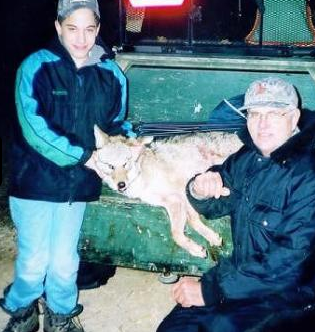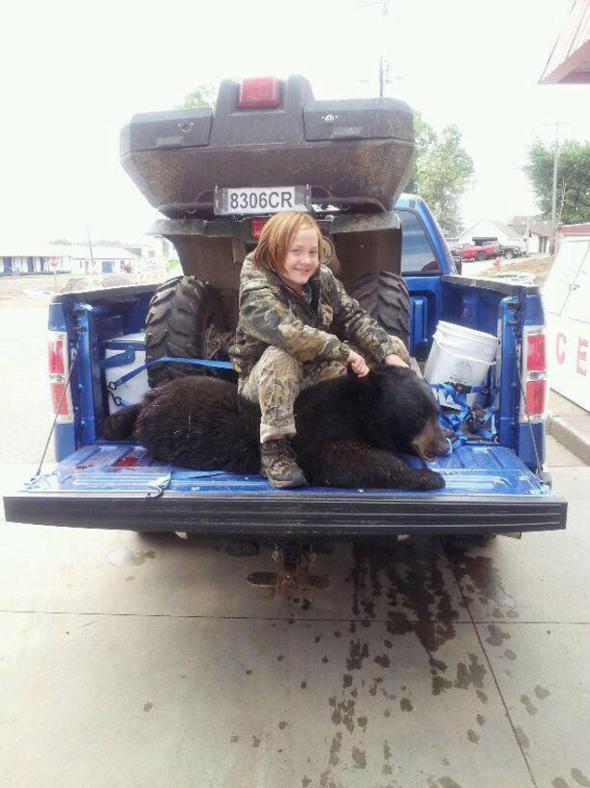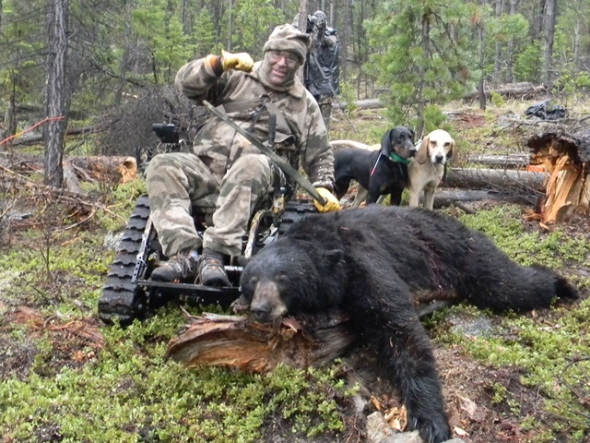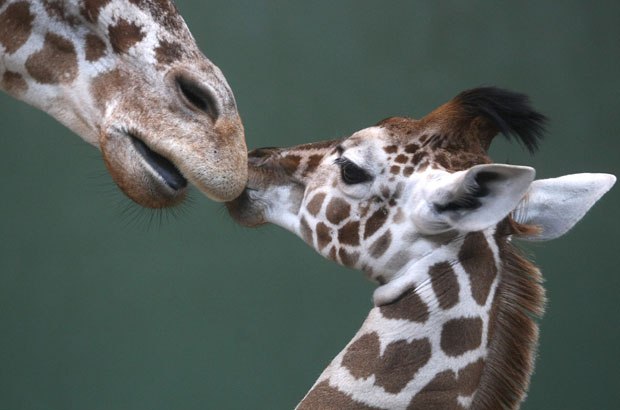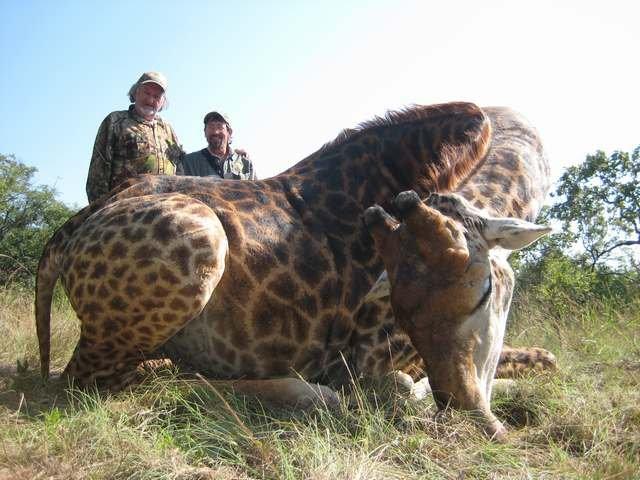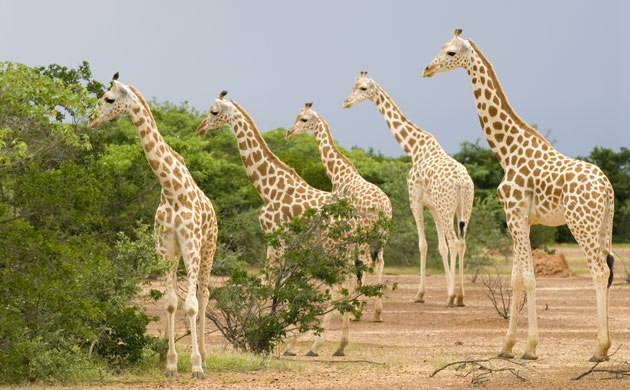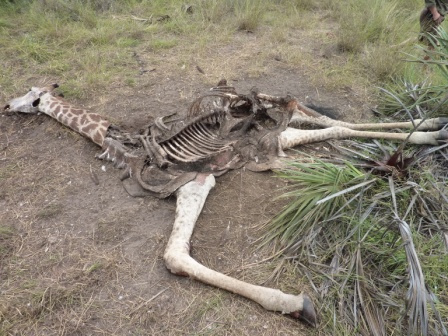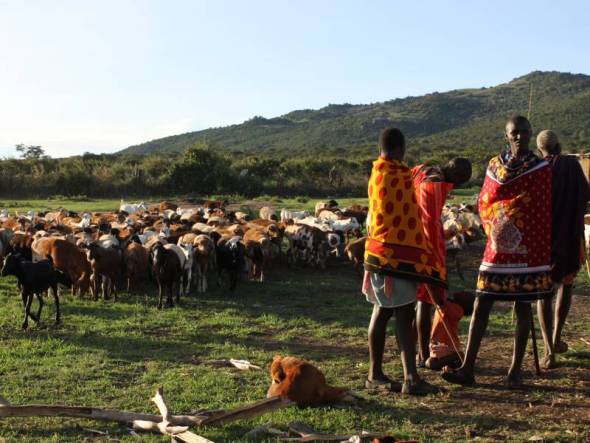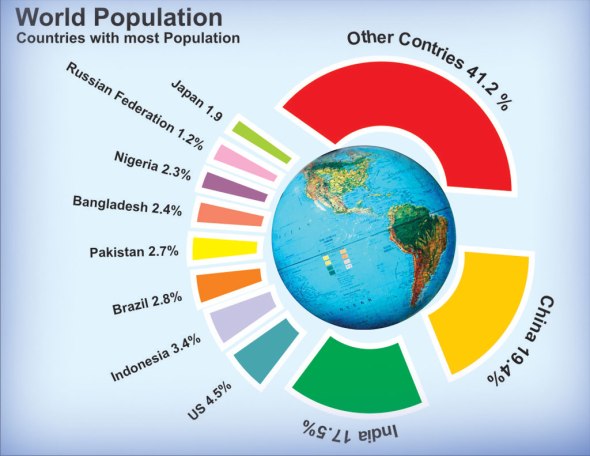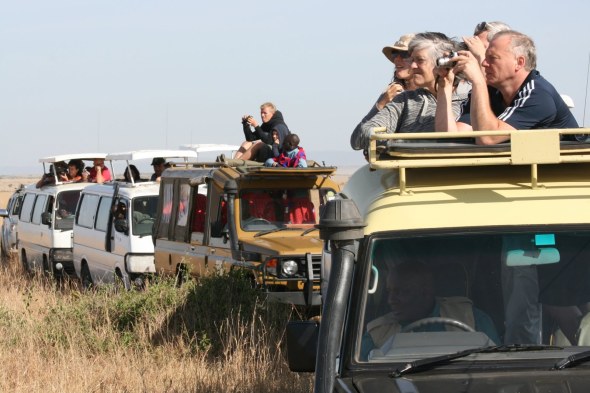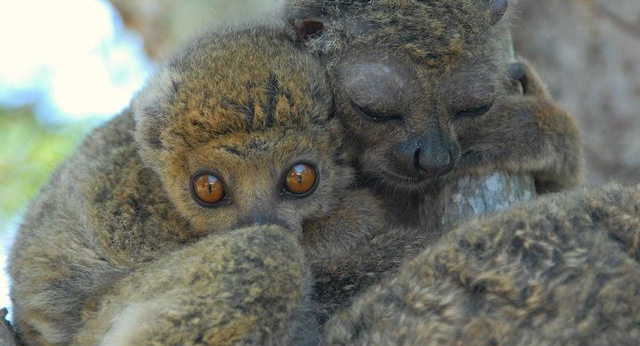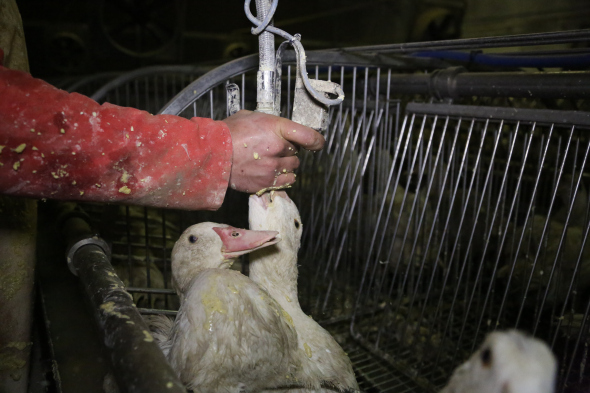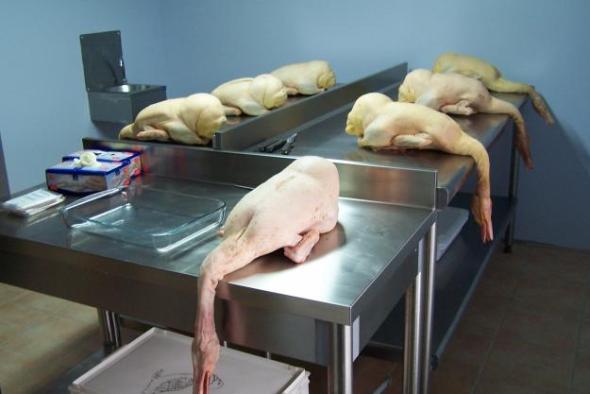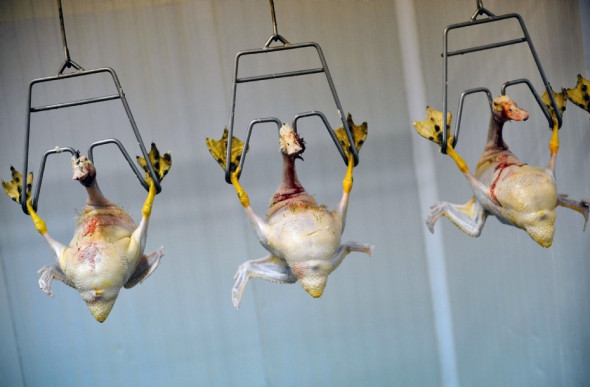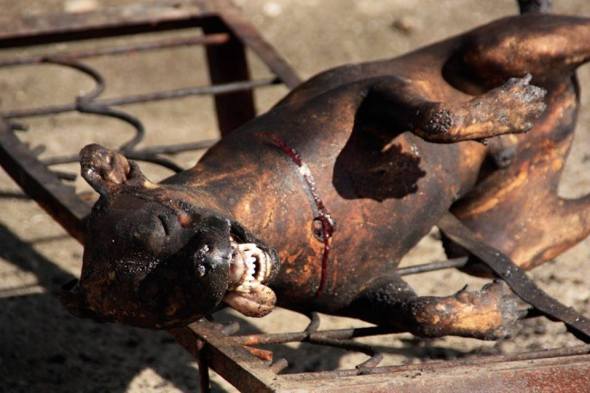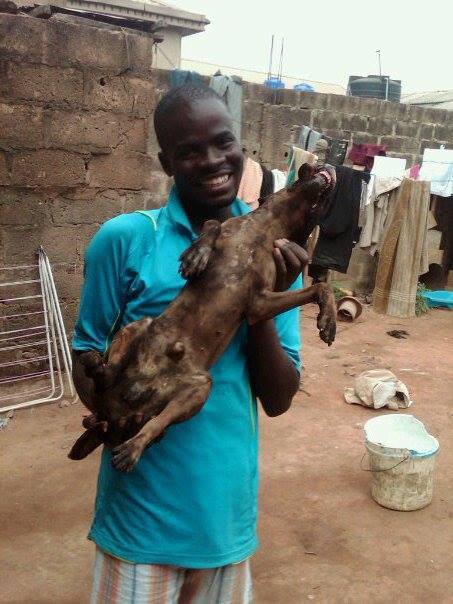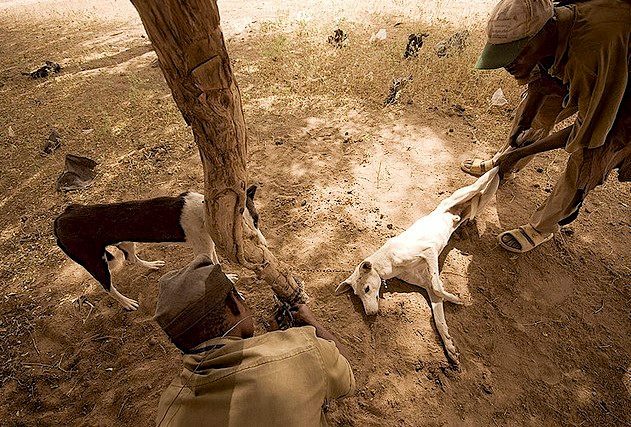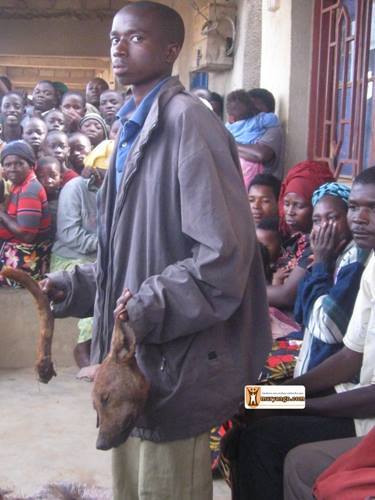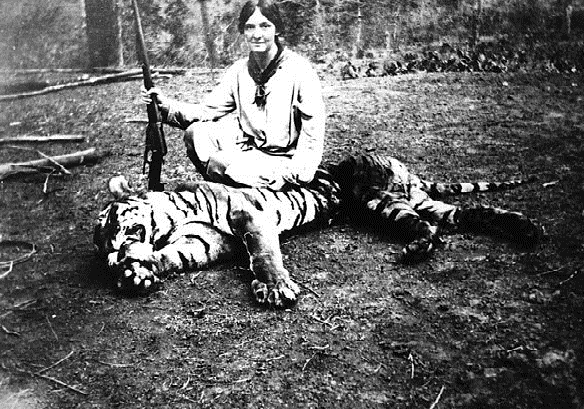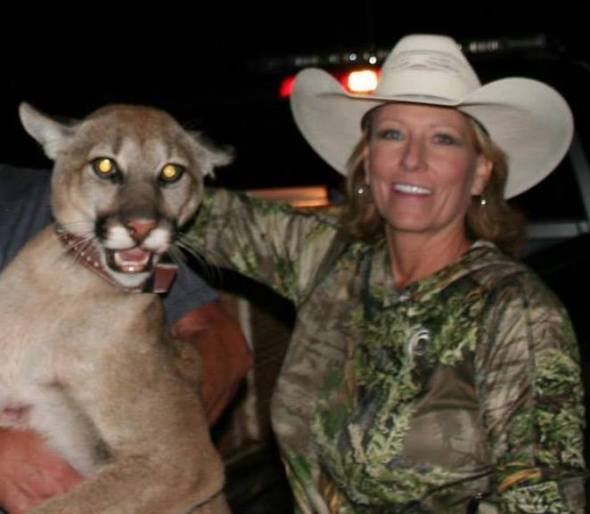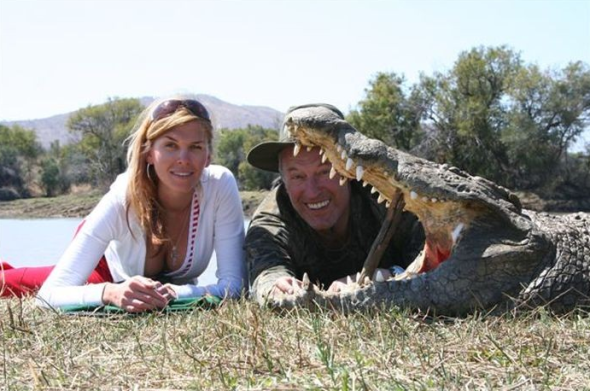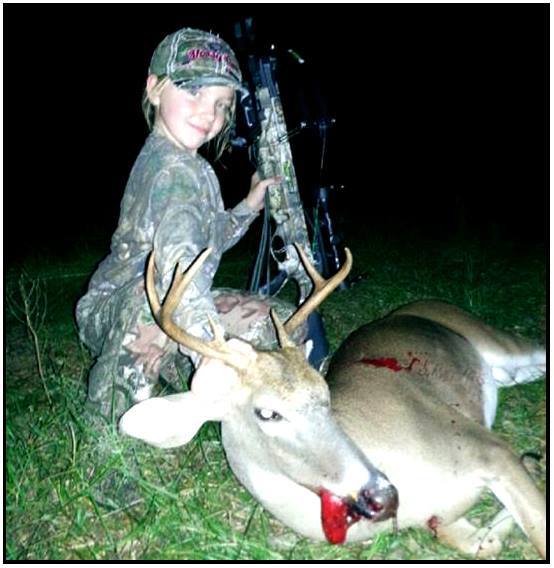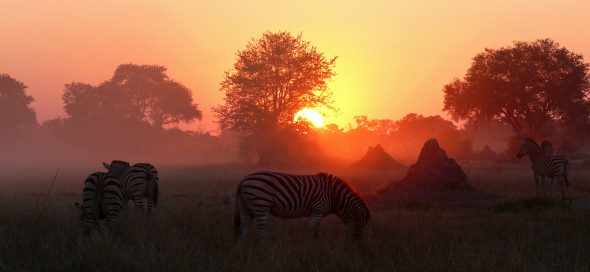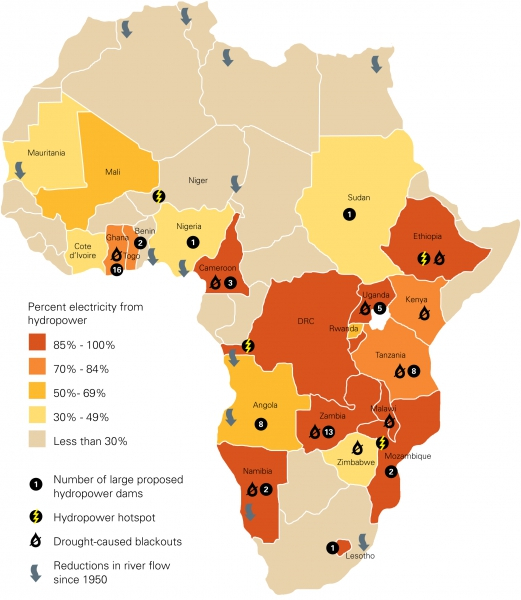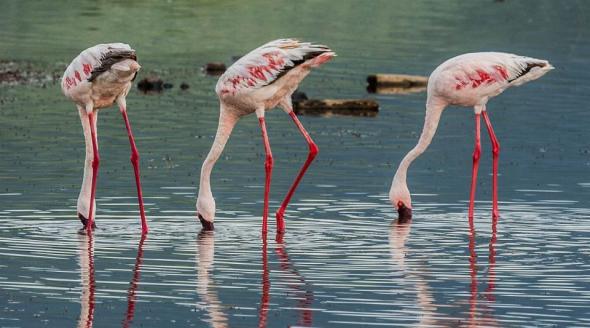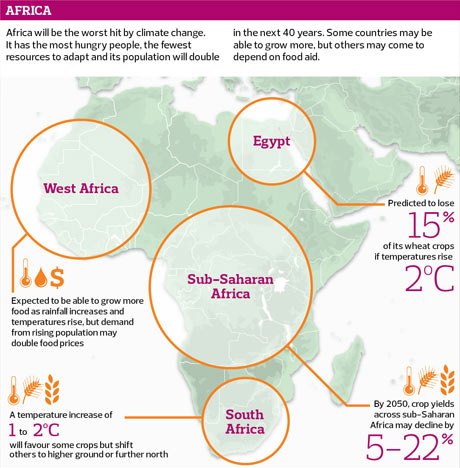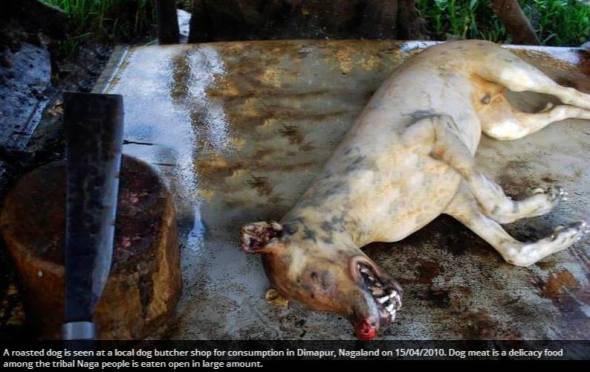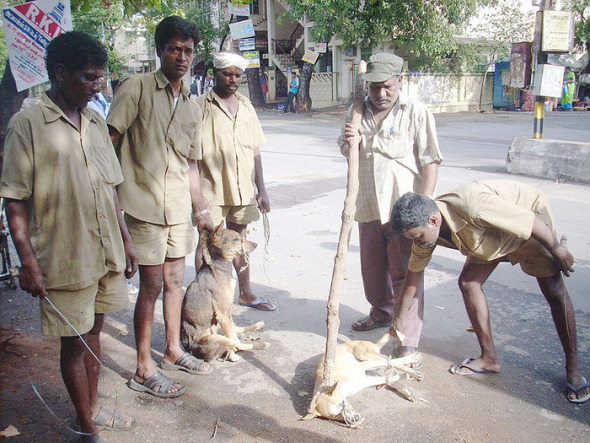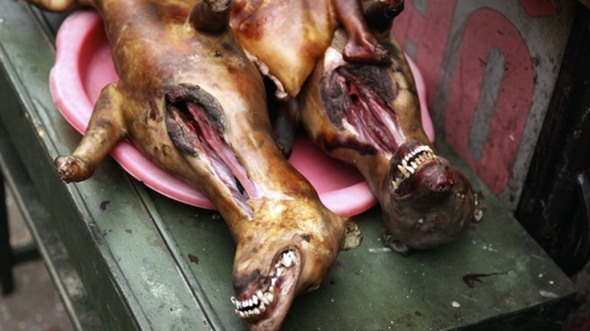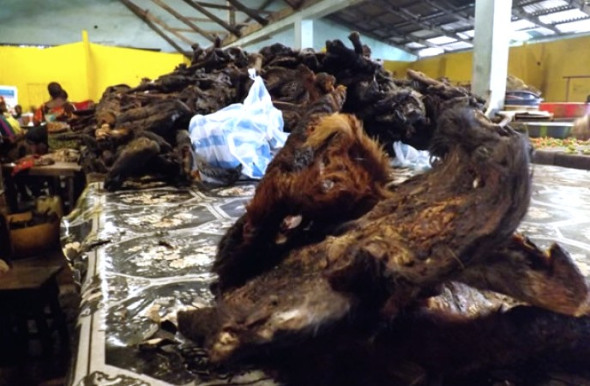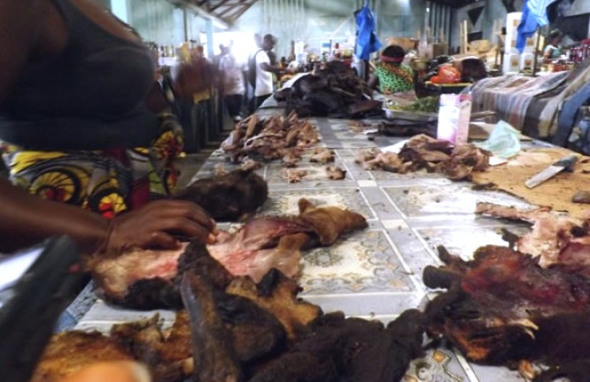Save a Life - Kill a Life - Only in America.
Being asked about the terms “attachment” or “bonding”, parents usually mention things like “relationship”, “love”, “affection” or “care”. It soon becomes clear that there are only few people in our life to whom we are really attached. The strong, emotional bond between child and parents represents one of these most valuable relationships. But what does the term “attachment” or “bonding” really mean?
Daily care and playful, loving interactions build strong bonds between parents and child. By providing consistent, loving care from early infancy, parents strengthen their relationship with their child and build a healthy attachment. A baby feels familiar and safe with his/her parents. Attachment could therefore be compared with a safe and emotional bond between parent and child, tying together these invisible links across space and time.
This “bond” becomes even more powerful when the parents children become ill, terminally ill or have unfortunately been born into the world disabled. I have children myself and know too well how we “as parents” feel towards our young that are disadvantaged from others. Strenuous and mentally draining we try our utmost hardest to provide what we can to less fortunate children.
I have been contemplating writing this short article for some time now, the sheer thought of showing to the world how selfish we are as human (parents) within a different “bonding spectrum” when it involves life and death of both human and animal somewhat frustrates me. Am I right documenting on this? For now even I cannot answer that question. When we as humans are given the chance of survival or a relief from (pain and illness) is it ethically correct to then take another life? Anyone that knows me would know the answer to that question.
Many parents feel they are alone when it comes to children with terminal illness or those with disabilities. They meet little understanding from people who are not involved and cannot imagine what it is like living with a sick child in the family. Many have little support from people around them, who do not see how hard going day to day life is. The child may need forms of treatment that are very trying for the parents, treatment which requires a high level of expertise shared by a small number of hands. It may, therefore, also be difficult for parents to get the information and support they need to help them through the critical phases of their child’s illness.
Children with disabilities can also have a profound psychological and physical effect onto mother and father, siblings too. Its challenging and tough work being a parent to any child that is terminally sick or disadvantaged from others. Relationships are strained; both mother and father feel untold stress and pressure. Parents are pushed to great limitations to provide some form of “normality to their sick or disabled child”. A sick and disabled child that cannot undertake the same playful activities as those whom are not ill again has an emotional and psychological effect to both parents. Parents want what is best for the child, to provide what they can “in such a short living time frame”.
Back in 2012 I read an article within America that showed terminally ill and disabled children hunting bears, impala, wolfs and exotic mammals. Please read more below;
An 11-year-old girl, waiting for a heart and liver transplant, had her dream come true when she killed a 335 pound black bear with a single shot to the heart. The United Special Sportsman Alliance (USSA) organized hunting trips in Junction City, Wis. for children with disabilities. The non-profit charity is dedicated to helping disabled and critically-ill children experience the “outdoor adventure of their dreams!” In this instance, the dream was bagging a black bear. Kaitlynn, 11, from Stetsonville, Wisc., was born with tricuspid atresia, a type of heart disease. She expected to return from the hunt empty handed but managed to shoot the 335 pound black bear, which her family intends to mount on the wall.
“When I looked through that scope I didn’t see it as a bear, I saw it as like a 300 pound lion that’s about to like attack you, so I held the gun as steady as I could, I turned my head and then I shot,” Kaitlynn told ABC News affiliate WAOW-TV. Little Savannah, pictured above, has had trouble feeling “normal” because of her constant battle with illness, her mother explained. On the trip Savannah managed to capture a 121 pound bear. “USSA has made her life feel normal in her not so normal world,” Savannah’s mother said. “She can’t stop talking about how much fun she had!” Another child on the trip, Wil, harvested a 281 pound bear. His family said that the trip allowed for great bonding time between father and son.
The charity sent out over 1,600 letters to hunters whose names won bear hunting licenses in a drawing for the 2012 Wisconsin hunting season, said Brigid O’Donoghue, CEO and founder of the USSA.
“The bear hunters who donated their licenses waited 5-to-10 years to get drawn in the lottery, yet chose to donate to give these kids a once in a lifetime opportunity,” O’Donoghue told the Daily News. Hunter Bob Drextor, for instance, donated his bear tag to Tyler, a young boy who has always wanted to hunt. Tyler and his mother visited Bob’s house after the hunt to thank him in person and share Tyler’s experience.
“Words can’t express how grateful we are to have gotten the opportunity to go on this trip,” Tyler’s mother said. A total of 37 children are attending the hunt — September 5 to October 9 — from all over the United States. They are fighting many life illnesses and disabilities, including leukaemia, Hodgkin’s disease and spinal muscular atrophy.
“These children battling life-threatening illness inspire us by their drive and determination to survive and how they cope with their daily challenges and never give up their will to live,” O’Donoghue said.
So far children have harvested 24 bears, which are on their way to taxidermists. Because of costly medical bills, many families would not be able to participate in such an expensive endeavour if not for the charity, said O’Donoghue.
Hunter Bob Drextor donated his license to The United Special Sportsman Alliance so that Tyler could hunt big game — a rare opportunity. O’Donoghue said that the USSA has granted over 8,100 free hunting, fishing and other outdoor trips.
“Bear hunting for a special child has a huge impact with all who take part in the event; not only those who contribute, but everyone who hears about it,” O’Donoghue said. “The look on the child’s face after a successful hunt is worth every minute that the volunteers put into the hunt.”
What I myself find frustrating about this entire article above is that parents whom know their child is/could be dying to then allow them to pursue a lust for killing an innocent mammal is grossly unethical. This is backwards. To all those parents that pray to god, asking god to save their loved ones from discomfort, debilitating diseases and death to then allow their child to hunt is beyond me.
I have no more to add to this article. Frankly I’m somewhat shocked to see such a betrayal. Killing a life to save another is one thing, saving a life or temporary reliving from discomfort to then kill a life unethically incorrect and immoral. Sadly its not just children with terminal illness or life threatening disabilities that hunt. Adults in the same predicament also hunt.
Anonymous Author.
Whats Happening to Africa’s Giraffe Species?
ON MY LAST VISIT to Africa January 2014 I was somewhat shocked and bemused at the high number of trophy hunted giraffes and outfitters supporting such “conservation practices”. I was more shocked though knowing that we now face a race against time to preserve our giraffe species before its to late. Hunting is not the the giraffes biggest enemy here, WE are. Please share this document far and wide - we have to work harder to save our natural heritage.
Standing at some sixteen to twenty feet tall giraffes are quite docile and can cause some form of damage to floral specimens such as trees as some other giant land mammals do such as the African bush elephant that has been reported and documented in conservation projects and documentaries.
Giraffes live in dry arid regions ranging from open wooded forests to semi-desert areas. They can inhabit grasslands, or open woodlands but prefer areas rich with prickly acacia plants. During periods of drought giraffes can cause major environmental damage by over browsing many different types of shrubs and trees.
Giraffes are generally timid animals that are easily disturbed by human activity. They will avoid most situations where possible but if confronted will defend itself by kicking out with their large heavy hooves. The type of damage a giraffe may cause to public property is unknown and damage caused by giraffes to plants and tree specimens to just wandering onto (unsecured) farmland is quite slim. Elephants, lions, cheetah and hyena can cause more damage to ranch cattle and farmland than most mammals within the African continent. Why the giraffe is being singled out here is somewhat unknown.
Is Non-migrating the problem?
Giraffes do not migrate and that could be causing a problem to land owners, farmers and ranchers, does it warrant hunting them though? International Animal Rescue Foundation Africa thinks not regardless of what hunting supporter’s state. Yes we have a human overpopulation problem standing at some 7.9 billion; however hunting animals is not going to counteract that problem. International Animal Rescue Foundation Africa believe in “curing the illness” not treating the symptoms. The United Nations and African congressmen and women must tackle “human overpopulation” and not support such hunting practices.
African Giraffes are under (threat) within Africa. Western African giraffe being the most threatened of them all. Giraffes were provisionally listed as least concern as the species remains widespread, with a total population numbering more than 100,000 individuals. However, a recent preliminary population estimate suggests a decline in the total population has taken place which, if substantiated, could mean that the species will warrant listing in a higher category of threat categorized as (near threatened). Some populations remain stable or are even increasing, but others are clearly in a more precarious position (and may well be threatened). Ongoing efforts to census the continent’s giraffe populations will allow more accurate assessment of the species’ overall conservation status, as well as described subspecies in future.
Population decline concerns;
Back in August 2013 experts met to discuss the erratic population decline of the African giraffe species based on census reports ongoing and complete from 2010-2012. They warned, and I quote them “giraffes the world’s tallest animal would become extinct in the next few decades if the trend is not checked”.
Back in 1998 estimates placed the total number of giraffe species at some 140,000 however the species has since declined to some 80,000 and still falling (IUCN-2010). Some non-governmental environmental organisations and activists have stated hunting of the giraffe is the “main reason for population decline” however this is not as accurate as made out. Giraffes are facing increasing pressures that have impacted on their numbers and distribution in Kenya and elsewhere across the continent. Human encroachment, agriculture and land purchases have pushed some giraffe species out of their natural habitat of which then poses concerns to farmland, ranch and other human populated areas of which giraffes are then forced to co-inhabit. Hence this is why “hunting then commences” and then (becomes a concern). The longer we continue to encroach onto wildlife pastures the more species population decline will occur.
The experts identified agriculture, settlement and destruction of giraffe habitats by pastoralists as some of the major factors reducing giraffe populations.
Pastoralists and the effects onto wildlife habitats;
Pastoralists have been noted as the most worrying issue with regards to species decline and encroachment locally and internationally. I would be lying if I stated such a problem was only confined to Africa. International Animal Rescue Foundation has seen from 2010 to present more pastoralists encroaching on to wildlife eco-systems but has also contributed to displacing native indigenous tribes of Africa. Conservation practices has also contributed to displacing tribes too.
Taking Kenya as an example there are some twenty four million people living within the country of Kenya of which 15% of the land is used for agriculture. Sudan is home to some 25.2 million people of which land used for agriculture is growing way past the 14% mark, Ethiopia holds some fifty million people of which land used for agriculture is now growing past the 10% mark. Pastoralism is the branch of agriculture concerned with the raising of livestock. It is animal husbandry: the care, tending and use of animals such as camels, goats, cattle, yaks, llamas, and sheep. “Pastoralism” generally has a mobile aspect, moving the herds in search of fresh pasture and water (in contrast to pastoral farming, in which non-nomadic farmers grow crops and improve pastures for their livestock).
Agriculture and its effects onto wildlife habitats;
Agricultural development alters the natural landscape and affects how species interact with their environment. Explaining patters in wildlife assemblages on altered landscapes allows scientists to better understand and assess risk of agricultural practices to native organisms.
Unsustainable agricultural and aquaculture practices present the (greatest immediate threat) to species and ecosystems around the world. (Please view here a case study in Laos). Farmed areas – both on land and in the water – provide important habitats for many wild plants and animals. When farming operations are sustainably managed, they can help preserve and restore critical habitats, protect watersheds, and improve soil health and water quality. But when practiced without care, farming presents the greatest threat to species and ecosystems.
Negative environmental impacts from unsustainable farming practices include land conversion & habitat loss, wasteful water consumption, soil erosion and degradation, pollution, climate change and genetic erosion. So to put it bluntly the “primary” threat to our giraffe species is competition (direct, indirect or latent) for resources – humans and livestock. During the last thirty years the habitat of the giraffe, in particular the “tiger bush“, has undergone severe reduction and fragmentation. The recent increased mobility of giraffe is most likely a result of this competition and degradation. Hunting is of course the “secondary” risk factor to the giraffe species. Regrettably should “unsustainable agriculture” coupled with the vast increase of humans within Africa continue then hunting will most certainly increase. Room is running out for our “tallest” land mammal and because they do not migrate then we will see trophy hunting increase. On must note though - trophy hunting is not nor ever will contribute to the decimation of our giraffe species within its natural habitat.
Niger/Nigeria and the Western African Giraffe;
The “giraffe zone” is one of the most densely populated areas in Niger: 35 people/km2 in the Koure plateau, and 70 people/km2 in the Dallol Bosso. The majority of the Zarma people in the Koure plateau are sedentary farmers (millet, sorghum, beans and maize), whilst livestock and crops predominate the livelihoods of those living in the Dallol Bosso. As a result of the high human population, the area of land under cultivation is increasing to the detriment of the giraffe habitat. Additionally, increased grazing pressure by livestock has and continues to threaten forage availability for giraffe as resources are limited. Coupled with this is the need of the local people to support their subsistence livelihood and increasing detrimental activities such as wood-cutting, which yield an extra income after it is sold in Niamey, are devastating. Giraffe species within western Africa are most certainly going to be the first species pushed into extinction of which their numbers don’t even hit the thousand thresholds. Good news thus far though, the western African giraffe is slowly making a comeback with “some” evidence now showing a small increase in population sizes.
Giraffa camelopardalis peralta is a sub species of the African giraffe that today numbers in the hundreds. Estimates state the current population size to be near 350 individuals of which this species is currently listed as “critically endangered”. Back in the early 1920’s giraffes within western Africa were in their thousands however as explained above “Population growth, intensive farming and illegal hunting has seen the species practically pushed from extant into almost complete extinction. Climate change and drought has also been blamed for depletion of giraffe populations, no more though than that of invasive farming, population growth and illegal hunting. Within the continent of Africa, the country of Nigeria is home to some 122-140 million people and with a growing population not expected to slow down within the next few decades unfortunately will see more species of giraffe habitat destroyed.
Masai Mara – steep decline in giraffe numbers;
The giraffe population of Kenya’s Masai Mara reserve has declined by up to 95% because of increased human settlement around the unfenced park, according to new studies.
Scientists at the Nairobi-based International Livestock Research Institute (ILRI) found that the numbers of giraffes, hartebeest, impala, warthogs, topis and waterbuck all fell “markedly and persistently” throughout the 1,500 sq km reserve between 1989 and 2003. Their sample counts were backed by government population estimates that showed actual losses as high as 95% for giraffes, 80% for warthogs and 76% for hartebeest for the period dating back to 1979.
The authors of the study, which was funded by the WWF and was published in the British Journal of Zoology in May 2009, say it presents the most detailed evidence yet of the rapid decline of ungulate, or hoofed, animals in the Mara, in south-western Kenya. Species decline is set to become ever more problematic too with regards to the “thousands” of tourists that visit this pristine ecosystem every year. We are looking at a possible “environmental disaster”. With Kenya’s economy heavily dependent on tourism the sad reality of many large species being killed off is quite worrying to say the least. The Masai Mara represents the northern quarter of the Serengeti ecosystem that stretches down into Tanzania. The wild animals that remain here require vast and various dispersal areas to survive drought, predators and human pressure. These safe havens are disappearing. Lodges surrounding the park have erected kilometres of electric fencing; lions have been known to use them to trap their prey. Shanty towns are developing fast, and some may soon be on the national grid. There are too many cows for not enough land, and wheat fields are advancing (wheat has become a swearword among conservationists).
Human waste is being buried or dumped. The environment is displaying symptoms of its mismanagement. Algae are emerging in rivers upstream, a consequence of fertiliser use. The Mara River, where wildebeest cross from Tanzania, dried up completely in 2009 and more environmental damage is set to follow over the course of a decade. Every year scores of minibuses are seen queuing to watch wildebeest splash through the water. But there was “just dust”. Inside the treasured reserve, monkeys play with crisps packets. Even the predators’ behaviour is changing. Guides that take tourists on excursions are also misbehaving and not acting in a “responsible fashion” as to not increase species human relations. Allowing tourists to hand feed mammal from the roofs of their minibuses is tantamount to murder.
The main reason for the population decrease of many species within the park was the rapid expansion of human settlements on the land next to the reserve. The area was traditionally used by wild animals for seasonal grazing but is increasingly being turned over to livestock and crop production.
The situation paints a bleak picture and requires urgent and decisive action. If nothing is done, these declines will not just continue but accelerate as the human populations around the reserve increase. Giraffes, lions, rhino wildebeest monkeys and birds of prey are now all under immense threat and Kenya’s government seems arrogant of the situation unfolding. Kenya’s government are more interested in the money flowing in rather than “sustaining wildlife” and securing ecosystems.
WARNING THE FOLLOWING VIDEO MAY BE UPSETTING TO SOME VIEWERS
Giraffe hunting/poaching – meat and hide;
Concluding this document hunting becomes the secondary cause of concern that “may” contribute to the giraffe’s species decline. As explained above human settlement, unsustainable agriculture, aquaculture and human over population impacts all have undesirable effects to giraffe’s habitat and pristine ecosystems of which are the most destructive - more - than hunting. Farming and human over population displace giraffe’s of which then go in search of foods elsewhere. This then sees the “problem” arising of human species conflict. Hunting as explained is more a “cull” in our eyes. Farmers and ranchers are frustrated with giraffe encroaching onto their land so therefore “hunting” has to be the only way to keep species numbers down. International Animal Rescue Foundation completely digress with this vile sport of which culling or killing however one wishes to call it will not keep specie intact or halt habitat degradation.
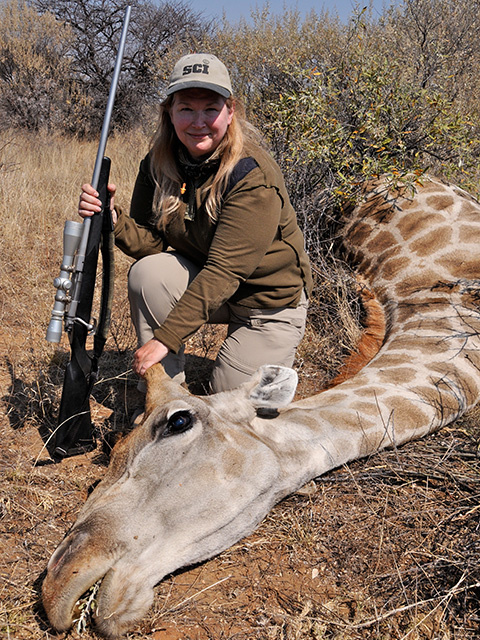
Native to fifteen African countries the species is struggling to find places to live which is a sad fact with regards to many wildlife species. Hunters from all over the planet being mainly South America, America, Canada, Europe and non-EU registered states hunt giraffe mainly for sport even British hunters travel to kill giraffe. Giraffes are also hunted (poached) for their hides and their meat. Giraffe tails are highly prized by many African cultures. The desires for good-luck bracelets, fly whisks, and thread for sewing or stringing beads have led people to kill the giraffe for its “tail alone”. Giraffes are easily killed, and poaching (now more often for their meat and hide) continues today. Historically, the coexistence of giraffes and humans has been rather peaceful. However, a growing concern about the damage that giraffe cause to the peoples crops is increasing. The toleration of the giraffe can only continue for so long unless other alternative incentives for the community can be developed, such as eco-tourism to supplement livelihoods. And as expected, poaching remains a serious potential threat with cases reported each year. Poaching is more rampant within western Africa of which the western African giraffe is protected by law. Anyone caught illegally face a hefty penalty.
Hunters pay up to £10,000 for the giraffe-hunting expeditions, which target the larger males.Safari clubs and game reserves ask for a £1,500 trophy fee and add £1,000 a day for guides and trackers. Dr Julian Fennessey, of the Giraffe Conservation Foundation, said some hunters came from Britain but most were from North America, Germany, Russia and Scandinavia. “Some hunters just like to have photos taken next to the dead giraffe”, he said. “But others pay taxidermists to mount the head so they can take them home as a souvenir. Or they might want to take the skin.”
Joe Duckworth, of The League Against Cruel Sports, said: “It is immensely selfish to kill these animals.
Giraffes are now thought to be extinct in African countries such as Angola, Mali and Nigeria. But in South Africa, Namibia and Zimbabwe it is still legal to hunt them. One hunter whom wished to remain anonymous stated “These are legal hunts, by professionals on private land. There will always be emotion from people who are not hunters when they see dead animals, but these are much regulated practices. “Rhino and other animals have been saved through conservation and the most money for conservation is generated from hunting.”
Dr Fennessy has controversially argued in favour of hunting. He said: “In the countries where you can hunt legally, the populations are increasing but across Africa the numbers are dropping. “It shows that if properly managed, the hunting can be sustainable.” International Animal Rescue Foundation Africa disagrees. Some 190 million a year is supposedly made from hunting practices yet species decline within permitted hunting zones and non-hunting zones still continues.
Although legal hunting of giraffes is a cowardly and repulsive act, legal hunting is not actually contributing to the giraffe’s population decline as such. Yes we have some vast decline from 100,000 to 80,000 individuals however giraffe’s are “illegally hunted” more intensely for their meat, fur, hide and as explained just for their (tails). Back in March 2011 in Nairobi Park Several incidents of giraffe poaching have been reported recently. Two dead giraffe were recently witnessed just outside of the National Park. The carcasses were stripped of meat and the skins neatly folded beside them! The giraffe may have been killed by a lion but the carcass then stolen by opportunists to make some cash selling the meat and hide.
Within the area of Kipeto, the third triangle of the Kigengela giraffe poaching has increased drastically. Within Kiserian town giraffe meat is sold to local butchers despite the fact poaching is illegal. Agencies seem non-to-bothered by the fact butchers are doing dealings with local community poachers. Concerning - What nobody is saying is that if poachers can get away with killing the Nairobi Park giraffes so easily, then what about Rhino’s? This disturbing trend of increasing boldness of the poachers means that the park and all its animals are at grave risk. KWS and anti-poaching units know whom the vast majority of the poachers are that operate within the local villages yet do little to apprehend them. If little is done then poaching will increase and of course poachers will become more brazen, bold. Worryingly this behaviour then has a knock on effect to other local community dwellers. If one is seen to get away with murder then I too shall kill as the saying goes what’s good for one is good for the other. Kibuchi urged public health officers to carry out regular inspection of meat in city butcheries however illegally poached giraffe meat and other meat still continues to flood the meat markets. Dog AND cat meat has also been noted as being sold to butcheries within Kenya passed off as “goat meat”.
The police and the tourism industry of Kenya have talked about the increase of poaching of giraffes and zebras in Narok County because of the reducing meat market in the country. The activity has increased in the last four years killing the zebras and giraffes for meat just like the elephants.
Poachers have introduced new ways of trafficking game meat and wildlife like packing the meat in gunny bags and naming them as containing foodstuffs, cereals, and Mutumba clothes.The Kenya Tour drivers and Guides Operators Vice-Chairman Andrew Mungatana will affect negatively the business since Kenya is known as a wildlife destination worldwide.
A new wildlife bill should be introduced and the government should highly fight poaching since it has become a real threat to the survival of wildlife.
In the meantime giraffe’s are on the road to extinction and the main African Giraffe Camelopardalis populations are not increasing, more decreasing. Experts have warned that giraffes are facing extinction due to increased poaching and habitat invasion. Kenya Wildlife Service (KWS) Director William Kiprono noted (2013) that much focus is not being directed towards giraffes yet they face increased danger.
Kenya currently hosts three giraffe subspecies that have drastically declined in the last 15 years.
“Giraffes are facing increased pressures impacting on their numbers and distribution in Kenya and Africa as a whole,” said Kiprono in a statement. National Conservation Task Force has established a Giraffe Conservation Strategy draft focusing on six key areas to save the animals. The interventions were identified as enhancing security of giraffes to stem declining numbers and arresting and reversing the current decline in their habitats through appropriate conservation and management.
Additionally, there will be an effective management of confined populations to secure long-term conservation, education and public awareness and mobilizing of community to be involved in conservation. The stakeholders will also ensure that infrastructural developments in giraffe ranges are compatible with conservation by closely working with concerned agencies.
“The guidelines will define the roles the Government, conservation partners and other stakeholders will play while it raises awareness about the plight of giraffes,” said the KWS director.
He said through the guidelines, the country seeks to mitigate threats and reverse declining trends in giraffe numbers while ensuring benefits to local communities.
While also recognising the enormous task ahead of them, he said KWS was committed to the existence of giraffes. Speaking at the same forum dubbed second International Conference on Giraffes at Nairobi National Park yesterday, KWS senior scientist Charles Musyoki praised the draft, saying it will save giraffes.
Conservation scientist with Giraffe Conservation Foundation Julian Fennessy said they are looking at different ways of conservation. He identified ‘introduction’ and ‘translocation’ as some of the moves they are considering. Statistics show that giraffes have dropped from over 140,000 (1988) to less than 80,000 (2012). Giraffes largely contribute to the economy in terms of tourist attraction. They are a must-see on safari-goers wish-list.
They also act as agents of change in habitats and landscapes by opening new areas and promoting growth of new forage.
Concluding;
While we see hunting within Africa a repulsive cowardly act of “legal animal abuse” for fun hunting is not going to contribute to the extinction of giraffe species. Land loss, habitat fragmentation, human over-population, unsustainable agriculture and aquaculture as too the illegal poaching for hide, fur, meat and (giraffe tails) will be the most critical destructive factor that (could) push giraffes into extinction within the next decade or two.
An increase from African and overseas environmental agencies must be seen within Africa, poaching must be tackled harder and human over-population looked into. Unsustainable agricultural practices from the worst offenders must be stopped with the aggressors banned from farming – repeat offenders jailed and/or fined immensely.
Relocations of smaller giraffe species must also be looked into within “poaching hotspots” to preserve the future species for generations to come. Whilst some may agree or disagree International Animal Rescue Foundation Africa believes a temporary moratorium on hunting must be drafted with regards to “threatened or moving into threatened species categories”.
Tourism whilst seen as a goof income within African countries such as Kenya must also be restricted. One cannot any longer see hundreds of mini-buses, cars and other automobiles packed within our parks. Tourism whilst playing a positive impact in some parks is having a detrimentally negative impact in others.
Thank you for reading Dr Josa Depre and Chief Environmental Registrar Europa - J Williamson.
Chief Environmental Director Africa and Eastern Europe
International Animal Rescue Foundation Africa
Please donate today to Funding African Wildlife Survival and help International Animal Rescue Foundation preserve and protect both our flora, fauna and wildlife protection units. Donate here via the right hand donate link.
www.international-animalrescue-foundation.org.uk or alternatively you can use our Facebook secure donation application here
Avahi cleesei - Extinction looming.
Known only to Tsingy de Bemaraha region of western Madagascar, north of the Manambolo River this stunning small primate is classified as endangered soon to be re-categorized as critically endangered. We humans should be damned ashamed ourselves regarding the Africa’s declining mammal life. Africa and Madagascar once held an abundance of wildlife. Walk through the bush today and one may not even view a single large mammal for some days.
Donate here today Funding African Wildlife Survival >https://www.facebook.com/pages/International-Animal-Rescue-Foundation-World-Action-South-Africa/199685603444685?id=199685603444685&sk=app_117708921611213
Identified and named in “2005” its actually quite hard to fathom that this species is already classified as endangered with species population size on the vast decease. PD Dr. Thomas Geissmann and Dr. Urs Thalmann whom is a Biologist are two of the most intelligent and unique Biologists and Primatologists alive today. Specializing in old and new world species studies their work has been published in many science journals detailing their current and past finds.
Named after John Cleese the British actor famed for his comedy drama (Faulty towers, Monty Pythons Flying Circus and an award winning film 1989 A Fish Called Wanda) the Avahi cleesei species is commonly refereed to as Bemaraha Woolly Lemur or John Cleese’s Avahi. Dr. Thomas Geissmann and Dr. Urs Thalmann named the species in 1995 after John Cleese mainly because of Cleese’s fondness for lemurs, as shown in Operation Lemur With John Cleese and Fierce Creatures, and his efforts at protecting and preserving them. (Please view the film above post).
Populations are decreasing on the African island of Madagascar of which the species was discovered in 1990 via scientists from Zurich University. The species was formally then named in 2005. Strangely populations seem to be more densely populated within disturbed habitats giving reason to believe that the species is or has become quite adapted to humans. Evidence clearly indicates that (some) lemurs of certain genera seem quite “fond” to a degree of human invaders. This however must not be seen as a positive thing.
The northern limit of its range is unclear and there is no evidence of its occurrence between the Sambao and Mahavavy Rivers or between the Mahavavy and Betsiboka Rivers. Currently, it is known only from within Tsingy de Bemaraha National Park, where it has been sighted in two localities, in the forest of Ankindrodro a forest 3 – 4 km east-northeast of the village of Ambalarano at the base of the western Tsingy precipice.
The species was previously outside the reserve’s boundaries in 1994, in the heavily disturbed forest in the surroundings of the village of Ankinajao. However, the forest was completely destroyed since these sightings at Ankinajao, and no woolly lemurs have been found there since 2003 - grid references have been removed for mammal security and to remove temptation via poachers for bush-meat.
Dr Thalman and Dr Geissmann noted that the disturbed forest close to the village of Ankinajao (outside the park), which supported a substantial number of individuals in 1994, had been cut completely by 2003. The subhumid forest at the base of the escarpment of the Tsingy de Bemaraha is under continuous pressure from bush fires that reduce it in many places every year–in some places to only a few meters in width. Such subhumid forests are the only habitat in which Avahi cleesei is known to occur so far. Although bush-meat trade has not been formally recorded with regards to “this particular species” the erosion of traditional cultural taboos in Madagascar has led to an unsustainable number of lemurs being killed for bush-meat.
Locals revered the primates, believing that the animals were family ancestors, but the influx of outside influences has seen a breakdown in these views. Some species do not reach maturity for up to nine years and produce offspring once every two or three years. A survey of locals’ eating habits by researchers from Bangor University in Wales, and the Malagasy NGO Madagasikara Voakajy showed that hunting of protected species in eastern Madagascar was increasing. They suggested the rise in illegal hunting was the result of rapid social change, an increase in demand for meat and a decline in traditional taboos.
What seems to be happening in some of the remote areas around the nation’s eastern rainforests is that a lot of legal gold mining is springing up, so people from outside are moving into the area thus increasing poaching and furthermore habitat degradation. Taboos play an important part in Malagasy culture, lemurs, especially indris, have been associated with very strong taboos that traditionally ensured that the primates were not hunted.
For example, one story tells of a man who was looking for honey in the forest when he fell from a tree. Before he hit the ground, he was caught by an indri. He was so grateful that he went back to the village and said from that moment on, no lemur was to be harmed. One can view the indri lemur here - First picture downhttp://www.npr.org/2013/02/02/170849125/did-you-hear-that-i-think-it-was-the-sound-of-a-walrus
Another belief is that the creatures are ancestors that became lost in the rainforests and turned themselves into lemurs in order to survive. However, Dr Jones said that although people did not prefer to eat bush-meat, it was often the only meat available. If they want meat to eat, there is very poor availability of domestic meat in these rural areas, which is a common fact even on the continent of Mama Africa.
Chickens suffer terribly from disease in rain-forest areas, so do not survive that well - so there is not much protein from domestic animals around. Dr Jones explained that the influx of people, attracted by job opportunities at the mines, had led to an increase in demand for meat and because people had wages from the mines, small bars that sold bush-meat were opening.
When Interviewed the results were quite shocking!
1. The survey of 1,154 households showed that the majority of meals eaten over a three-day period did not contain any meat at all.
2. Among the meals that did contain meat, the preference was for fish or domestic animals rather than bush-meat.
3. Just under 10% of meals consisted of wild-caught animals, and just 0.5% contained meat from protected species.
SHOCKING EVEN MORE - when respondents were asked if they had ever eaten a protected species, 95% said that they had. They know the species is “endangered” yet “still continue” to place it at risk from bush-meat trade.. International Animal Rescue Foundation Africa has been documenting in the vast scale of the bush-meat crisis however we are very concerned with regards to these findings. Either attitudes have to change within the trade of bush-meat, increased overseas conservation projects seen, or we are sadly going to lose the vast majority of our primate and non-primate species by 2040. Avahi cleesei sadly may not even be around then.
WORRYING
When the team monitored villages to see how much bush-meat was being brought in, they recorded 233 carcasses of Endangered indri, the largest species of lemur. Species like the indri, for example, mature at seven to nine years and then only have one young once every two or three years. Primates, in general, are known to be extremely vulnerable to over-exploitation. Should conservation efforts now not reduce the bush-meat trade, awareness and education from local environmental companies, and non-profit organisations/charities then regrettably were going to lose the majority of our lemur species within the next decade regardless of whether they are consumed on rare occasions.
Please donate to Funding African Wildlife Survival above to help us increase education, awareness and to fund better eating habits, local farming practices and creation of community outreach projects in the bush-meat trade. Donate here today>
https://www.facebook.com/pages/International-Animal-Rescue-Foundation-World-Action-South-Africa/199685603444685?id=199685603444685&sk=app_117708921611213
Located west of the island of Madagascar Avahi cleesei weighs about 5–6 kilograms (11–13 lb), has brown skin with white regions on the rear and inside of the thighs and has a short damp nose, large plate eyes, and ears which hardly stand out from the skin. It typically has a strictly vegetarian diet of leaves and buds, living together in small families. The local population calls the species dadintsifaky, which means “Grandfather of the Sifaka”, because it is similarly sized to sifakas, but more ponderous, heavyset and has ample greyish-brown fur.
***End of Report***
Take TODAY action sign these current petitions hereto;
http://www.thepetitionsite.com/404/320/112/save-lemurs-earths-most-endangered-mammals/
http://www.thepetitionsite.com/990/416/482/save-the-northern-sportive-lemur/
http://www.thepetitionsite.com/990/416/482/save-the-northern-sportive-lemur/
http://forcechange.com/109165/save-lemurs-earths-most-endangered-mammals/
http://forcechange.com/107805/protect-lemurs-from-extinction/
http://forcechange.com/27052/lemurs-worlds-most-endangered-mammal/
http://forcechange.com/17108/ban-lemurs-as-pets-in-the-u-s/
http://forcechange.com/8937/keep-primates-out-of-the-exotic-pet-trade/
DONATE HERE TODAY;
FUNDING AFRICAN WILDLIFE SURVIVAL (F.A.W.S)
Donate here https://www.facebook.com/pages/International-Animal-Rescue-Foundation-World-Action-South-Africa/199685603444685?id=199685603444685&sk=app_117708921611213 For more information you can contact us at;
info@international-animalrescue-foundation.org.uk
Problems or questions on donating? You can phone our main conservation unit here at;
+4407531167527 - Request a Skype conference call - email us at the top address and make sure you have Skype - www.skype.comdownloaded to your Ipad, Iphone, or other communications device or handset.
SUBSCRIBE TO ENVIRONMENTAL NEWS AND MEDIA HERE TODAY FOR FREE
WWW.SPEAKUPFORTHEVOICELESS.ORG
View the seven part video documentary here today on Operation Lemur
Harpy Eagle - Road to Extinction.
Known as the fifth most formidable bird of prey on the planet the Harpy Eagle or American Harpy Eagle was identified by Professor Carl Von Linnaeus. Swedish botanist and zoologist Linnaeus was on e of the most influential botanists and zoologists of all time identifying in is his life time hundreds of species of mammal, plant and tree specimens.
Harpia harpyja as its generically known was first identified and named back in 1758 of which its population size wasn’t under threat then as it is today. Regrettably the Harpy Eagle is now near threatened with populations now in the decrease.
Harpy Eagles are not endemic to Africa. Native to Argentina, Belize, Bolivia, Plurinational States of Brazil, Colombia, Costa Rica, Ecuador, French Guiana, Guatemala, Guyana, Honduras, Mexico; Nicaragua, Panama, Paraguay, Peru, Suriname, and Venezuela reports state the species is locally or regionally extinct in large parts of its former range, notably most of central and north Central America and possibly Rio Grande do Sul, Brazil. Even within its most extensive range Harpy Eagles are actually a rare sight.
Although still reasonably common in the Amazonian forests of Brazil and Peru, it will only survive in the long term if the escalating rate of forest destruction in the region is brought under control and a network of inviolate reserves established (Please view the information below with regards to deforestation). Low overall population densities and slow reproductive rates make shooting the most significant threat over its entire range. It could perhaps survive in disturbed forests or even forest mosaics if its large size and boldness in the face of humans did not make it an irresistible target for hunters (Hunters pay big bucks to hunt this species just to display its trophy on their home walls - what a bloody waste). It presumably also suffers from competition with humans for prey. Humans are sadly playing such a large roll in Harpy Eagle depletion.
Deforestation
International Animal Rescue Foundation Brazil have been documenting on deforestation legally and illegally within the Amazon over the ten years. We reported on “decreased levels of legal and illegal logging”. This however has changed and for the worse it seems.
From 2011-2012 some 2.050 square kilometers of forest were lost displacing species, ripping up medicinal plants destroying the environment furthermore. However from 2010-2011 some 2,261 square kilometers of forest were ripped up. Although declines are noticeable its not enough and species extinction within these areas especially within Harpy Eagles zones habitats are becoming “common practice”.
Harpy Eagles main habitats are Mexico, Guatemala, Belize, Honduras, Nicaragua, Costa Rica, Panama, Colombia, Venezuela, Guyana, Suriname, French and Guiana.
However larger but sparse population sizes are seen within the countries that share the Amazon rain-forest being, Argentina, Bolivia, Brazil, Chile, Ecuador, Galapagos, Patagonia and Peru. These areas are of major interest to International Animal Rescue Foundation Brazil as deforestation is rife and species extinction slowly occurring of both flora and fauna. Deforestation was stated to be on the (decrease). That is of course what the South American governments want everyone to believe. Please see facts below.
WHAT HAPPENED from 2011-2012 when reported only 2.050 square kilometers of rain-forest was recorded destroyed?. However from 2013 and this figure will shock you. A staggering 28% of rain-forest was lost IN ONE YEAR! Beating all records known since 2004.
Someone and “some government and a certain petroleum company” of which we have been BANNED FROM NAMING IN OUR ARTICLES knows exactly WHY Amazonia rain-forest depletion increased by 28% between August 2012 and last July 2011, after years of decline.
BACK in May of 2012 Speak Up For the Voiceless.Org printed via reports from International Animal Rescue Foundation Brazil three articles within its “Environmental Chapters 1-33″ detailing the (advance of two unmanned) oil companies. Pe******** and Cha****** . Later that year Pe********* emailed our Brazilian environmental company ordering them to remove all pictures, all MAPS and ALL evidence that showed them (DESTROYING MILE UPON MILE) of pristine rain-forest DESPITE a national uproar by the Nat-Geo and American NGO’s. Harpy Eagle habitat, plants of medicinal importance aquatic and mammal life within the areas 295.6 kilometers from Yasuni were obliterated. Indigenous tribes were also displaced. NO the forest destruction is not caused by locals. Forest destruction within the Harpy and other mammal zones are being destroyed due a loan handed to President Rafael Correa not being paid back on time to the Chinese. Google it or read whats left of the articles here http://www.speakupforthevoiceless.org - please view the maps and please watch all videos.
The fight to stop the destruction of this area of rain-forest has been lost. Sadly money speaks louder than words. America, China and Ecuador will be held responsible for any such species extinction caused by noise pollution, Co2 emissions, poaching, pollution, and human species conflict. The provisional statistics from August 2012 to July 2011 suggest that the area suffering deforestation was 5,843 sq km (2,255 sq miles), compared to 4,571 sq km (1,765 sq miles) in the previous 12 months. The 28% rise interrupts a period of declining deforestation which began in 2009. However, it still remains the second lowest annual figure for forest loss in absolute terms.
The worst year on record was 2004, when 27,000 sq km of forest was destroyed. Monthly data from several scientific institutions had suggested the deforestation rate might be on the rise. Little did anyone know it was actually true. The Brazilian government stated This swing is not related to any federal government fund cuts for law enforcement,” she told reporters, adding that around 4,000 criminal actions have been taken against deforesters in the past year.
Although the Ecuadorian and Brazilian region of Amazonia is spread far and wide, Harpy’s do inhabit both large and small owned regions. Brazil owns the vast majority of the Amazonian being some 60%.
Harpy’s occur in uninterrupted expanses of lowland tropical forest (typically below 900 m but locally to 2,000 m), but will nest where high-grade forestry has been practiced, and use forest patches within a pasture/forest mosaic for hunting, however with no forest there is no Harpy. Nests have been reported only 3 km apart in Panama and Guyana.
The Harpy Eagle was first described by Linnaeus in his Systema Naturae in 1758 as Vultur harpyja, after the mythological beast harpy. The only member of the genus Harpia, the Harpy Eagle is most closely related to the Crested Eagle (Morphnus guianensis) and the New Guinea Harpy Eagle (Harpyopsis novaeguineae), the three composing the subfamily Harpiinae within the large family Accipitridae. Previously thought to be related, the Philippine Eagle has been shown by analysis of DNA to belong elsewhere in the raptor family as it is related to the Circaetinae.
Here are a few interesting facts about the Harpy Eagle:
An Amazonian apex predator: In the Amazon rain-forest, Harpy Eagles share the top of the food chain with Jaguars and Anacondas. The Jaguar rules the forest floor, the Anaconda is king is swamps and lakes, and the Harpy Eagle dominates the canopy of the rain-forest.
What do they eat?: Although Harpy Eagles are commonly believed to solely prey upon sloths and monkeys, studies carried out in Tambopata have shown that they catch and eat a variety of animals. While they do eat sloths and monkeys, they also take large birds such as toucans, kinkajous, and will even kill Brocket Deer! That’s quite amazing for such a large bird of prey.
Over sized beak and talons: Harpy Eagles look especially intimidating due to their huge, Grizzly Bear sized claws and massive beak. The legs of the Harpy Eagle can also be nearly as thick as the wrist of a person!
A wide-ranging, rare bird: This big eagle historically occurred in rainforests from southern Mexico all the way south to the Atlantic coast of Brazil. However, they need large tracts of animal-filled rain-forest to survive and have thus disappeared from many areas of their range.
The moral of this story is should deforestation continue, the want for more wood and paper products, lack of recycling the sadly we will lose the Harpy by 2030.
Thank you for reading;
Chief Environmental Officer
Botanist & Environmentalist
Dr Josa Depre.
South African Foie Gras - Cruelty Certified
The trade in foie gras has caused quite a controversy over the past decade mostly within Europe and America. Animal rights activists and outspoken chefs have denounced the sadistic farming practice and horrific slaughter of ducks and geese force feed a cocktail of corn with a gavage. Gavage is the term commonly known as “feeding tube” that is rammed down the duck and goose neck into the animal’s oesophagus; if an auger is used, the feeding takes about 45 to 60 seconds. Modern systems usually use a tube fed by a pneumatic pump fed via a slit cut in the oesophagus; with such a system the operation time per duck takes about 2 to 3 seconds.
ENM prints on a wide range of animal and environmental issues locally and worldwide however have yet to document on the cruel foie gras trade within Africa. Many Africans seem completely oblivious that the food they are consuming has been placed through a hellish cycle of abuse and narcissistic torture.
The French (who produce 78% of the world’s foie gras) have taken recent bans very personal with a politician from foie gras producing Gascony calling on all French restaurants to ban California wines in solidarity with the foie gras industry. California chefs still to this day violate the law even though foie gras has been banned. Although the ban will not have a significant impact on the French markets as they consume most of what they produce the French are apparently concerned that the ban would spread to other countries. The last orders of foie gras must now be heard within south Africa.
Locally foie gras also made headlines early last year when the NSPCA confiscated local producer Bon Canard’s Muscovy ducks and laid a criminal charge of animal cruelty apparently relating to the cage sizes and the controversial “gavage” technique used to fatten the ducks. “There was never any cruelty in our process, there are many misconceptions about the production,” said Rhoda Diedericks from Bon Canard. They were producing foie gras for 15 years with the SPCA apparently often on their farm even witnessing the feeding process. Its was “alleged” that the SPCA of south Africa supported a “humane foie gras trade” although no evidence of this allegation can be found. South Africa’s SPCA have been creating quite a large awareness and education program on foie gras production and the cruelty involved.
Several European countries have banned the sale and production of foie gras although some still continue to legally import, Great Britain being one prime example, Netherlands and Brazil being the (largest) exporters of foie gras and poultry into south Africa. South Africa has still yet to really address this sick act of cruelty although some traders such as Supermarket chain Fruit & Veg City (2012) was forced to remove foie gras (duck liver paté) from its shelves and issue an apology after shoppers voiced their anger at the sale of the French delicacy. The South African retailer stated;
“Fruit and Veg City and Food Lover’s Market is pleased to confirm that the group has discontinued the stocking and sale of foie gras in its stores effective immediately,” said the chain, via its publicist.
“The product was available in a limited number of stores located in Gauteng and due to several complaints we have had from consumers, we have taken a second look at this industry.”
The group said its decision was that, although the sale of the product in South Africa was not illegal, to endorse this product would be to endorse an industry that is noted for its inhumane practices and treatment of animals.
“Our priority is always the consumer, focusing on trends and demands, but this is always balanced with the company values of fresh produce sourced in a sustainable manner.” Emily Springer wrote on the retailer’s wall on Facebook: “We love going to your stores. Please don’t spoil this. [You say:] ‘We are here to educate, invigorate and update you on all the goodness of the Fruit & Veg City offering.’ Goodness does not equal selling foie gras.”
Bonny van Niekerk posted: “Thank you for making it so easy for me to never shop in Fruit & Veg again. It’s not often that we are given the chance to do the right thing and make a public stand against animal abuse. [I] am disappointed that you did not step up! Shameful!”
With many bans implemented within Europe, Europe and Brazil remain the (largest) poultry exporter to South Africa with some vast tons of poultry imported into South Africa as stated by SARS annual import summary (2007-2012). The summary states that Netherlands and Brazil are the largest exporters of duck, geese, and poultry into South Africa of which our investigative reports are included below for your information.
There seems to be no reduction with regards to foie gras and poultry imports too. From 2007 some 278,437,828kgs of poultry imports were imported into South Africa. From 2009 some 229,000,000kgs of poultry were imported of which 2012 was the largest to date equalling some 403,772,595kgs poultry imported into South Africa from Netherlands, Brazil, South America, even the United Kingdom. Please note this final number equates “all poultry” imports being chickens, ducks, and geese. Ducks and geese are defined as “other”.
Classified as “other” on the summary report we can state that from 2007 some 46,617kgs of duck and goose were imported into South Africa from Europe, Brazil, America and Great Britain being the soul exporters, of which in 2009 saw only a slight decrease. 2010, 2011 and 2012 onwards sees more demand grow for “duck and geese” products of which from 2010 sees some 63,064kgs imported, 2011 sees some 188,436kgs imported and 2012 saw some 369,114kgs of duck and geese imported into South Africa. SARs current 2014 summary has yet to be released however this is proof that demand for “duck and geese” products of which foie gras is also listed is on the increase within Africa at worrying levels. Total number of duck, geese and guinea fowl imports equated to a 0.1%.
Restaurants flagged as selling foie gras within South Africa;
Restaurants that have been highlighted as selling this filthy disgusting animal torture range from Ginja & Shoga, FortyAte, Bosman’s, Savoy Cabbage, Aubergine, La Colombe, Main Ingredient, Foodsmiths, Cape Colony, Bon Apetit, L’Auberge Du Paysan, Le Quartier Français, Manolo, Five Flies, La Campagnola, Villa Belmonte, BlauuwKlippen, Fashoda Loge, Constantia Uitsig Restaurant, Buitenverwachting Restaurant, D’Vine Restaurant at Willowbrook Lodge, Hout Bay Manor Hotel, The Greenhouse, The Restaurant at Grande Provence, Linger Longer, Le Carnard, Auberge Michel, Emily’s, 96 Winery Road, D’vine at Willbrook Lodge, Jaqui Daya Good Food Store, Mosaic at The Orient Hotel, Stone Hill, Lynton Hill, Guardian Peak, Terroir Kleine Zalze Estate, The Michaelangelo, Bouillabaisse, Green Truffle and finally The Westcliffe in Johannesburg.
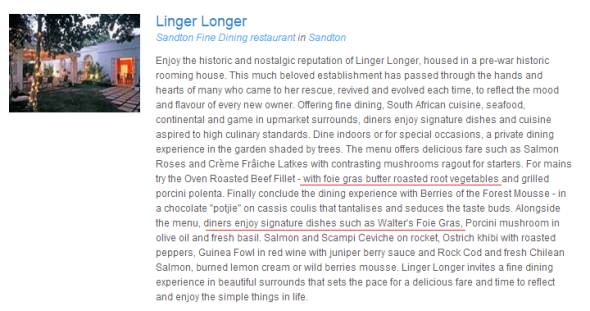
Most foie gras producers do not consider their methods cruel, insisting that it is a natural process exploiting the animals’ natural features. Producers argue that wild ducks and geese naturally ingest large amounts of whole food and gain weight before migration. This is far from actual truthful though as like humans their stomach will inform their brain via neurological signals that their tummy is now full thus ceasing eating. The same neurological behaviour is also seen within geese and ducks to many more animals too. Despite the scientific evidence, they claim that geese and ducks do not have a gag reflex in their throats the same way that humans do, and therefore do not appear to find force feeding uncomfortable. Michael Ginor, owner of Hudson Valley Foie Gras, author of Foie Gras… A Passion, claims his birds come to him to be fed and says this is important because “a stressed or hurt bird won’t eat and digest well or produce a foie gras.”
According to Industry groups including the CIFOG, and researchers at INRA, forced feeding is not a cruel procedure. Mirepoix USA, a top provider of goose and duck foie gras, alleges that the animal rights activists attack is a form of prohibition against a cuisine item. Mirepoix claims that the use of the term “diseased” to refer to fatted liver is inaccurate and that geese and ducks naturally store dead fish in their esophagi for long periods of time.[28] The ducks used in foie gras production, however, are a hybrid of Pekin (a type of Mallard) and Muscovy ducks, both of which are dabbling ducks and as such, subsist mainly on a diet of underwater vegetation, larvae, and various insects.
Chefs and diners alike have been force-fed misinformation about how its production affects the welfare of the birds, but here are the scientific facts:
Confinement: The birds are kept in barren pens or cages that restrict their freedom of movement, cause painful injuries to their feet, and prevent them from enjoying any natural behaviour.
Stress and Pain: Insertion of the feeding pipe stresses the birds, as it overcomes their gag reflex and can cause painful injuries to the throat.
Death: During the force-feeding phase, mortality rates are three to 10 times as high as in flocks of non-force fed ducks of the same age. These high rates are due to the injuries to the throat, liver failure, and heat stress – all of which are directly linked to the force-feeding practice.
Conclusion
Trading and producing foie gras within south Africa must stop sooner rather than later. The cruelty involved to produce such a rich yet stagnant dish of inhumane cruelty is beyond comprehensible of which we are shocked to see such a copious demand for foie gras products increase despite awareness and activism within south Africa. An all out ban within Europe, South America and the United States via banning exports, productions and “avine bird parts” used in the process of foie gras production will not necessarily stop demand or production within south Africa. The craze for foie gras in south Africa is great of which banning exports will begin a more “increased” trade of foie gras within south Africa. The entire trade has to stop now.
Take action today - educate yourself and others on the certified cruelty of foie gras cruelty here
Take action and sign the petitions below today;
https://www.change.org/petitions/amazon-stop-torturing-ducks-for-foie-gras
http://www.petitionspot.com/petitions/foiegras
http://www.change.org/petitions/irish-restaurants-stop-serving-cruel-foie-gras
View more petitions here;
http://www.change.org/en-GB/search?utf8=%E2%9C%93&q=foie+gras
http://www.care2.com/find/site#r=petitions&q=foie+gras+
Please make a small donation to International Animal Rescue Foundation South Africa your donation goes directly to our Pan African Projects working to Fund African Wildlife Survival. Food, medications, anti-poaching-equipment, and much more is what your donations go into. For further information please email us below/
http://www.international-animalrescue-foundation.org.uk/general-enquiries/
Thank you for reading;
Chief Environmental Registrar.
African Pet Meat Trade - Africa Exposed.
Selling dog meat has since been prohibited in Lubumbashi since Saturday, February 8 2014 within the DRC (Democratic Republic of Congo). The provincial Minister of Environment and Conservation Katanga Audax Sompwe announced the measure during a meeting with the mayor and the mayors of all municipalities. To our shock dog meat abattoirs have been uncovered all over west, north and east Africa. Had awareness campaigns not been practiced dog and cat meat would still be a staple diet for many in the DRC for instance. WE are monitoring the situation within western Africa however an area that is considered extremely volatile a cautious approach has to be taken at all times even when reporting to displaying photographic and video evidence. The last thing we wish to increase is civil disturbance within communities or place life in jeopardy.
The Minister asked the mayors to close all illegal dog abattoirs, and to track those who steal and farm people’s pets to eat and sell these animals. Audax Sompwe says that consumption of dog meat has been seen at “worrying proportions” in the city of Lubumbashi. According to him, “we are witnessing the last time in Lubumbashi slaughter of the pet at a breakneck pace.” We at International Animal Rescue Foundation Africa are keeping an open mind though with regards to policing and pet slaughter houses being closed down. As yet no substantial evidence has been seen of such markets and slaughter houses being closed down or the arrests of vendors.
The provincial Minister of the Environment is satisfied with laws apparently implemented that dogs should be protected like any other animal. “The dog is still a human companion, an animal that had been used to take hunting,” he says to justify its prohibition. It also evokes the unhygienic conditions in which the meat is prepared.
Last week International Animal Rescue Foundation Africa included an article within Environmental News and Media of which documentation was shown on the possible relation to dog meat and the current increasing Ebola virus. Evidence clearly showed that there is plausible belief that consumption of infected dog meat within western, northern, and east Africa has been to blame for the increase of victims that had contracted Ebola. Dogs are rarely cared for within these regions of Africa that forage for food mostly consuming dead animal carcasses that have/could be infested with Ebola. Furthermore hunting with dogs a common practice within central, north, west and eastern Africa has also shown to be a disease risk to villagers. Dogs that are used to hunt bring back an array of infectious diseases of which Ebola was noted.
2011 saw dog meat back on the menu within the country Democratic Republic of Congo of which rising food prices mainly beef, and lack of sufficient staple dietary incomes had been quite a concern for many a people. International Animal Rescue Foundation Africa and an African and Australasian registered organisation Say No To Dog Meat.Net have been increasing awareness of such issues in the region however are somewhat sceptical that the dog meat trade will simply vanish.
Only yesterday did International Animal Rescue Foundation Africa report on climate change destructions that have been predicted to increase by 2020 -2100 that could spell a more vicious wave of pet consumption within the DRC and countries such as Liberia, Sierra Leone, Nigeria, Ghana, Angola and even South Africa should climate concerns not be addressed now.
2011 Dog meat was very expensive on the market. Its price varied between 4 and 8 euros per kilo, it is therefore impossible to buy every day,” explains Odette Nyabadeux, an inhabitant of the Nyabushongo neighbourhood. The financial crisis, which is affecting numerous countries in the Great Lakes region, has also severely affected the economic life of the Congolese population. Indeed, it forces people to look for alternative ways of surviving.
As the price of an entire dog can vary between 4 - 10 euros, a group of people often come together to buy an animal for two dollars each. “This allows us to eat the meat several times a week,” concludes Anto Bukasa, head of a household in Goma, who has also come to stock up on meat at the market. Dog meat is therefore appreciated for its affordable price which is true of the whole region explains Solonge Mudekereza: “even at home in Katoyi, we very easily find dog meat sold at all prices. Beef is very expensive.”
International Animal Rescue Foundation Africa and a non-related registered non-charitable organisation are optimistic that dog meat “consumption” will cease. Dog meat farms and private traders may be hit on the head and reduced however the actual “cultural” practice and the taste of dog meat has somewhat increased peoples want for more which raises concerns with regards to infectious disease and illness.
Previously in DRC, dog meat was only eaten by a few tribes from the province of Kasai. Other tribes considered it to be dirty or taboo. However, attitudes have changed, explains Jeannette Ndamusu, of the Bashi tribe and mother of eight children: “Many years ago, dog meat was not sold on the market because we didn’t eat this meat. If we heard that our children were eating dog meat with our neighbours, they would be severely punished. Back then, our way of life forces us to eat dog because beef is extremely expensive.”
According to the statements of those who consume dog meat today, it doesn’t appear to have any harmful effects on the health of the population. “Today, I eat dog without a problem. Its meat likes any other kind and besides it is delicious,” confirms Odette Nyabadeux.
For now we will be as explained monitoring the situation within the Democratic Republic of Congo to see if any such trade in dog meat is actually banned and that of dog meat abattoirs are closed down. Working closely with the provincial Environmental Ministries and local police food and health agencies within known dog meat consumption areas we will update soon.
Moving on to Liberia we were extremely shocked to see such a vast dog meat trade within the country. Unlike Nigeria where dog meat is only consumed in areas of Jos and Lagos, in Liberia dog and cat meat is consumed all over the country. Some 4.9 million people (statistics 2012) actually consume their pets. Furthermore Ebola has been linked to the consumption of pet trade.
We recently contacted an animal welfare organisation within western Africa that has spoken outright on the pet trade within Liberia. For now based on intelligence reports we are keeping the organisation and individuals name strictly private. The reasons for confidentially is because Liberia is an extremely volatile and poor country of which pet trade is a staple income for many Liberians. Money is scarce and for now we do not wish to endanger individuals that wish to publically speak out on such trade that could place human life in danger, least forgetting hampering awareness and education projects too. Please view the interview below for your information.
ENM - How long have you been advocating for animals and what encouraged you to take such positive actions against environmental abuse and the Liberian dog and cat meat trade?
Liberian Anti Pet Trade - First of all, I was born, grew up and live in a society or environment where animals are treated as commodities. Dogs are very helpful in sustaining lots of families at the rural level in Liberia. Dogs serve as source of income for lots of rural inhabitants- they hunt. These animals serve their owners with loyalty but are treated as commodities. Their lives are not respected and their meaningful contributions to sustaining lots of families are not considered. When these animals are unable to perform their duty or when their owners need money, the dogs suffer as the result. They are either sold alive or killed and prepared as commonly called “ISSUE“ and sold in the community. Growing up in a society where animals’ lives are meaningless, I said to myself, these animals deserve better lives. We need to stop the horrific and barbaric acts and replicate the love and loyalty these animals continue to show us even the point when we are killing them. 2007, I started to create the awareness and discouraging people especially the younger generations who are future decision makers to say NO to dog and cat meat. My team and I continue to visit communities and schools campaigning against eating these animals and challenging their beliefs about dog meat. The campaign is embedded with environmental protection awareness. We all benefit from a society that protects its environment.
ENM - Recently we have been exposing to the public the pet meat consumption trade within Africa of which many people are still unaware actually exists. How bad is the dog meat trade within Liberia and where are dogs and cats coming from? As you may or may not know within Nigeria smugglers traffic dogs and cats over the border from Cameroon, Niger, Chad and Benin. Is there any evidence that smugglers are active within Liberia?
Liberian Anti Pet Trade - This is not the case in Liberia. These dogs are locally raised in the
Communities lots of people own dog(s). They usually sell some of their dogs or puppies to others. Dog snatching is common in big cities and towns like Monrovia. It rarely happens in rural communities. People who sell or eat dog meat in the rural communities own them.
ENM - How many dogs and cats on average are killed for the pet meat trade within Liberia? And on average how many market stalls are there within Liberia that sell dog and cat meat?
Liberian Anti Pet Trade - Our campaign has been on the local level. We have not done a survey to determine the rate of consumption in the country. We do not have specific markets in Liberia for dog meat. It is done in local communities. Recently, I was told that there is a place in Monrovia where dog meat is always available but I have not done follow up on this so I cannot conclude that it is true or not.
ENM - We recently republished an article on our main animal welfare and environmental rescue site of which we detailed dog farms within Namibia. On knowing that such a trade within Liberia is active and not illegal is there evidence that shows dog and/or cat meat farming to keep up with the trade? For example within Korea and China there are many dog and cat meat farms that are similar to that of cattle farms. If there are any farms within Liberia where exactly are these farms located, or is it more a case that communities will farm locally their own dogs and cats then sell on to the public?
Liberian Anti Pet Trade - It is not illegal to eat dog or cat meat in Liberia, but to my
knowledge there is no established farm in Liberia for dog or cat meat. We have not identified such an area in the country even though we are just in one part of the country.
ENM - How long has the dog and cat meat trade been active within Liberia and have you noticed an increase within the pet consumption trade? If so when did the increase in trade occur and why do you think the pet consumption trade increase occurred for?
Liberian Anti Pet Trade - It is a long time societal practice. It is normally done, and on big occasion days, the consumption can increase in rural areas.
ENM - Climate change and civil war within Northern Africa, Central Africa and Western Africa has been linked to an increase in wildlife depletion, habitat fragmentation and extinctions of flora and fauna. We know from experience that within the majority of these African states where climate change and civil war has been increasing or is still active that this has increased food shortages. Do you agree a food shortage have increased the dog meat trade or is entirely responsible for pet meat consumption?
Liberian Anti Pet Trade - That may be true in other country, but in Liberia dog meat eating is not based on food shortage, even though food shortage is a problem in Liberia. It is normally done; it was done before the war and after the war. It has nothing to do with food shortage.
ENM - Is there any specific dog or cat species that is consumed within Liberia and if so what species of dog or cat, or is it just a case that any dog or cat is killed then consumed? For instance do consumers eat a specific breed and if they do why do they eat this certain breed of dog or cat for?
Liberian Anti Pet Trade - As long it is a dog, the eaters will eat it. The dogs eaten here are locally raised.
ENM - Within South Korea, and China dog and cat meat is consumed for medicinal reasons of which has never been medically proven. Do Liberians consume dog and cat meat for medicinal reasons and if so what medical benefits do they believe they will obtain from eating dog and cat meat?
Liberian Anti Pet Trade - People who eat dog meat in Liberia, when ask they will say it protects them and gives them authority when they are speaking in public. Some also say that dog meat is sweeter than the other meat.
ENM - From 2005-2013 there have reports of Africans citizens falling ill after consuming dog and cat meat. In some extreme cases people have actually died from consuming infested dog and cat meat. Have there been any cases of any such illness occurring after eating dog and cat meat in Liberia? And do you know of any prognosis of any consumer that fell ill after consuming dog or cat meat?
Liberian Anti Pet Trade - Perhaps, but it has not been recorded in Liberia.
ENM - Rabies, SAR’s, food poisonings and a potential mutation of any H1N1 virus are our major concerns within the dog and cat meat trade both within Asia and Africa. To your knowledge has there been any rabies or SAR’s cases increasing within areas of Liberia where dog and cat meat is consumed? Furthermore is there any evidence of food poisonings occurring within the dog and cat meat consumer market? If there is any evidence of food poisonings what to your knowledge were the culprit viruses that made consumers ill for example, E-coli, Campylobacter enteritis, Listeria, Staphylococcus, Salmonella or the highly contagious Gastroenteritis?
Liberian Anti Pet Trade - Dogs suffered from rabies in Liberia and we have been educating people about rabies and the preventive measures. People always ask us if their dog(s) died of rabies whether they can eat it, we continue to tell them“ NO“- they should bury the dog(s). We have not come across a case of food poisoning occurring within dog and cat meat consumer market.
ENM - Would you agree Liberian traders that sell dog and cat meat are also using the money made from this trade to fund the purchase of firearms, narcotics, to fund human trafficking, or poaching within other Africans states or is it correct to state that traders are simply killing and selling domestic animals to support their own families?
Liberian Anti Pet Trade - It is mainly for sustainability. They are simply killing and selling domestic animals to support their own families. It is not an organized trade.
ENM - Liberia hosts a fairly small population of wildlife species, would it be correct to state that with such a small wildlife population status of any species that dog and cat meat is being used as a substitute for the bush meat trade?
Liberian Anti Pet Trade - That is not the case. People who eat dog meat do not eat it because there is no other meat; they eat dog meat because of their own beliefs that dog meat has some medical and supernatural power. Some people say that dog meat is sweeter than other meat. It is used as a substitute for the bush meat trade.
ENM - What age groups mainly consume dog and cat meat or is the consumer trade more identical to that of Asia of which mainly men will consume dog and cat meat?
Liberian Anti Pet Trade - The consumption rate is mainly among men. Cat meat is rarely eaten. Very few people eat cat. It is not sold in the market.
ENM - What are your major concerns with regards to the Liberian dog and cat meat trade and do you propose the trade be addressed to cease such animal cruelty?
Liberian Anti Pet Trade - It is a cruel act. We need to address the issue. People need to show their innate love and compassion for these loyal animals. As the result of these cruel acts done to animals, children grow up accepting the idea that animals are to be exploited and used for own ends, denying that animals have their own feelings, emotions, individual personalities and family relationships.
ENM - Do you believe that a “regulated trade” would be beneficial to reduce animal cruelty increasing animal welfare? A regulated trade is basically a trade that is recognised by the government, controlled and reduces the risk of abuse and illness.
Liberian Anti Pet Trade - I believe that the trade should be totally eradicated.
ENM - Within Asian dog and cat meat consumer nation’s dog and cats are killed in the most grotesque manner. Beaten and tortured to death to provide a tougher meat that is strong tasting. It’s believed that consuming such a tough and strong tasting meat makes you more strong and fit. Are dogs and cats tortured in the same manner within Liberia or are they simply just slaughtered outright. How do the slaughterers kill the animals and is it mainly men or women that kill the animals?
Liberian Anti Pet Trade - Dogs are killed by beating and strangling. (ENM is awaiting further literature with regards to this question which is of importance).
ENM - Liberia hosts some 12.2% strict Muslim citizens however under strict Islamic law it clearly states that dog meat is strictly forbidden and killing such an animal cruelly is also seen as a violation of strict Islamic law. To your knowledge are there any Muslims within Liberia that consume dog meat and what are your thoughts on this and any potential religious violation?
Liberian Anti Pet Trade - Throughout out campaign awareness, we have not seen people in the Muslim community eating dog meat. Some of them do not even raise dog. The law is good. It shows compassion for other creatures that share this planet with us.
ENM - During the 2001-2002 Ebola outbreaks in Gabon, it was observed that several dogs were highly exposed to Ebola virus by eating infected dead animals. To examine whether these animals became infected with Ebola virus, scientists sampled 439 dogs and screened them by Ebola virus-specific immunoglobulin (Ig) G assay, antigen detection, and viral polymerase chain reaction amplification. Seven (8.9%) of 79 samples from the 2 main towns, 15 (15.2%) of 99 samples from Mekambo, and 40 (25.2%) of 159 samples from villages in the Ebola virus-epidemic area had detectable Ebola virus-IgG, compared to only 2 (2%) of 102 samples from France. Among dogs from villages with both infected animal carcasses and human cases, seroprevalence was 31.8%. A significant positive direct association existed between seroprevalence and the distances to the Ebola virus-epidemic area. This study suggests that dogs can be infected by Ebola virus and that the putative infection is asymptomatic. On the (02.04.2014) it was announced that four Liberians had died from contracting Ebola virus. What are your thoughts on this and has the Ebola scare with deaths rapidly occurring over Africa had a profound effect within the trade of dog and cat meat? Furthermore do Liberians actually know that consuming dogs that have been exposed to Ebola or dogs that have consumed dead infested Ebola wildlife species can actually die or become seriously ill? More worryingly would you agree that Ebola infested dog meat has been responsible for the deaths of many Africans outside of Liberia and within Liberia. I ask this questions because the areas from which Ebola has been seen, are areas within Africa where dog and cat meat is consumed on a wide scale?
Liberian Anti Pet Trade - Liberians have not been informed that this may expose them to the virus. The government has been placing more emphasis on bushmeat. I personally believe that eating animals that have eaten infected meat pose serious health concern. For now, people who have died of the virus caught it from close relatives. But the possibility of people dying as result of eating infected dog meat is high if people are not educated about it sooner.
ENM - When I spoke to you last you stated that dogs and cats that are eaten are mainly pets. However the Liberian pet trade is quite large. Would you agree that stray dogs and cats are also caught and killed for trade? If strays are killed and eaten then would you agree that there is an extremely high risk of stray dogs and cats that have come into contact with Ebola wildlife now posing a serious viral risk to life within Western Africa and the majority of some 3.7 million Liberians?
Liberian Anti Pet Trade - The Liberian Health Ministry continues to warn the population to stop eating bush meat- which is considered in Liberia as the main ingredient in food preparation. According to the ministry, these wild animals may be infected with the virus before killing them, so eating bush meat for now may pose risk of the Ebola virus. Most of the stray dogs and cats also eat other animals. These animals may be infected with the virus, so eating the dog and cat meat may pose high risk of people eating them. I do not want to limit it to stray dogs and cats, in the rural communities, people keep dogs for hunting and these dogs also eat other animals in the bush, eating dog and cat meat as a whole pose serious health concern.
ENM - What work have you undertaken to educate the public and those that trade dog and cat meat within Liberia? I have noticed you seem rather active within animal welfare of which you have encouraged many people to join in. Are you making a difference though?
Liberian Anti Pet Trade - We have been educating the population and discouraging people from eating dog meat. We placed more focus on the younger generation to change the negative conception and beliefs they have learnt from the adult concerning dog meat. The children also serve as animal ambassadors in their various communities in disseminating the information to the wider society. Our intervention is making a difference gradually but slow. There are people we met and discussed with them, after the discussion, they admitted of eating dog meat but vowed to stop eating dog meat.
ENM - My final question, in what areas of Liberia is the dog and cat meat trade most active?
Liberian Anti Pet Trade - I want to say yes because it is normally done here. Even though we do not have an established market where people go and buy dog meat. It is locally done in communities.
Thank you, Mr Darbo for taking the time to answer my questions.
For security and because of the content of this article we have replaced the West African DMT organisation name with Liberian Anti Pet Trade.
Dog meat trade in Africa poses a serious health risk full stop. Research and intelligence from our ground team indicates two prominent areas where International Animal Rescue Foundations Europe unit and its unrelated non-charitable organisation Say No To Dog Meat.Net will be working within to decrease rabies and infectious disease and to halt the dog meat trade.
RABIES
Meanwhile in Nigeria a report stated ten cases of rabies in subjects aged 3 to 52 years were recorded in these five months period from 2012. Eight of the cases were male and apparently got infected directly or indirectly through the trade in stray dogs for human consumption. None had proper PEP and all patients died. This is unfortunately the sad reality of dog and cat meat trade within both Africa and Asia. Africa though poses a significantly higher risk than Asia due to lack of awareness, medicine and community outreach support.
Rabies is a preventable viral disease of mammals most often transmitted through the bite of a rabid animal. In the past, human rabies usually resulted from a dog bite, but recently, more cases of human rabies have been linked to bats, cats and raccoons. In the developing world, dog bites are still the commonest cause of rabies.
Rabies is universal. According to WHO report in 2006, more than 3.3 billion people are at risk for rabies in over 85 countries worldwide. About 55 000 deaths from rabies are estimated to occur every year, 99% of which are the consequence of dog bites. Of these 31 000 are estimated to occur in Asia (20 000 in India alone) and 24 000 in Africa. Universally no disease exceeds the case fatality rate of rabies. Progress must continue towards the elimination of human rabies.
In countries where rabies is endemic, stray dogs account for more than 90% of human rabies exposures, especially among 5-14 years old children in rural or peri-urban areas. In parts of southern Nigerian, dog meat is a widely consumed delicacy. In recent times we have recorded a number of cases of rabies associated with bites and scratches from such dogs bought for consumption. The purpose of this report is to highlight the transportation and wide consumption of stray dogs in southern Nigeria as a risk factor for rabies and cruelty to animals; and alert the authorities on the need for the control of this trade and threat to human life.
The subjects were children and adults admitted to the University of Calabar Teaching Hospital (UCTH), Calabar with a clinical diagnosis of rabies. The hospital serves as a referral centre for the whole of Cross River State, in southern Nigeria. Cross River State has a population of 2.9 million. The demographic data of the patients; parents’ occupation, health seeking behaviour of the patients / parents, the clinical features at presentation, modalities of treatment before presentation, nature of attacks, and immunization status of the dogs and the outcome of the patients were documented. Through careful history, the sources of the infections were determined. Focus group interviews of the participants in the stray dog trade was also conducted to determine the sources of the dogs and their handling. Each patient was treated with intravenous alimentation, sedation and other supportive measures.
Table 1 (pic below) shows a summary of the features of the ten cases of rabies seen in the UCTH between July and October 2012. Focus group interviews of persons involved in the trade revealed that such dogs are usually stray dogs captured in northern Nigeria mainly Adamawa, Bauchi and Plateau states and transported in large numbers in trucks to the south for consumption. Ones are selected for domestication. These ones often go into fights with the local ones. Others are tied and killed with blows to the head, before being roasted and prepared for eating. Serial number 1 was bitten by a domesticated dog which suddenly turned violent and was immediately killed and eaten. The father of serial number 3 is a dealer in stray dogs and dog meat and the child was bitten by one of the stray dogs meant for sale. The others were earlier bitten by domesticated dogs which had earlier had fights with stray dogs (serial nos. 2,3, 7 and 8). Serial number 6 was bitten by an unidentified stray dog while serial number 9 and 10 were bitten by stray dogs meant for sale. Almost all the victims either first presented to chemists shop or to no health facility at all. One first presented to a traditional medicine man. None had post exposure prophylaxis.
The dealers in dog business seem to be aware of rabies and claimed to have an organ within the dog’s abdomen which when eaten, serves as prophylaxis against rabies. They insisted this was a trade secret which could not be revealed. The traders take measures to circumvent veterinary checks on the way during the transportation of the dogs. Such animals usually arrive from the long distance journey un-fed, exhausted and irritable.
Generalised concerns;
- Rabies is universal with almost uniform mortality. Recently survival rate of 8% has been claimed in the United States.
- The ten cases of rabies reported within five months in a referral centre which serves a population of only 2.9 million is an epidemic and may represent a tip of the iceberg.
- The major risk factor for rabies in this series was the widespread trade of stray dogs fuelled by consumption of dog meat as a delicacy. All of the dogs meant for consumption are usually strayed, apparently unimmunized, posing a threat to those involved in the trade.
- The states in Nigeria from where these dogs are captured are known to be endemic for rabies from dog bites. 11,12 Rabies could easily have entered the food chain in Cross River State from these sources. The prophylaxis claimed by the dealers is obviously spurious. Since this trade is usually carried out within or near living quarters, children are also exposed. The preponderance of males in this study may be a reflection of the fact that the trade is carried out almost exclusively by males. Male children are also more adventurous and therefore more likely to encounter these animals.
- The study also observed poor health seeking behaviour in all the subjects. Six of the ten cases reported did not present to any health care facility following the bites, while the other four visited patent medicine stores and drug vendors for first aid. Post exposure prophylaxis with anti-rabies vaccine is the major preventive measure against rabies following a bite by a rabid animal.
- None of the victims had prophylaxis, as none presented to an appropriate health facility until the onset of symptoms. It is also obvious that the patients/parents had no knowledge of the implication of such bites or the appropriate prophylaxis. In our environment, roadside chemists play major roles in health care as they are closer to the people, cheaper and poorly regulated. These chemists have no formal training and learn by apprenticeship with older chemists. It is evident that they either do not know the significance of bites by stray dogs and/or the proper post exposure prophylaxis. In addition, the capture of dogs and transportation for several hours in congested trucks without food or water, and killing with blows to the head amount to cruelty to animals and should not be tolerated. However the practice is wide spread and deeply rooted and would not be easily eliminated
CONCLUSION
Trade in stray dogs, fuelled by consumption of dog meat as a delicacy, is a major risk factor for exposure to rabies in our environment. Poor health seeking behaviour and inappropriate post-exposure prophylaxis lead to clinical disease which is uniformly fatal.
Huntress Cry Victim.
BACK in February Environmental News and Media highlighted a brief article on hunting is not conservation of which basic facts were placed into the public domain debunking hunter gibber and how female hunters treat hunting as a type of fashion parade.
Uncle Sam’s Misguided Children, Daily Mail UK, The Sun, Telegraph, Colorado CBS Kathy Walsh and many more media and press stations published articles to the effect that we were in some way “bullying, stalking and harassing female hunters”.
I must say we was quite shocked to see many British animal and wildlife loving media and press actually supporting animal killers within the United States that hunt for the fun of it. Amusingly the comments left by some thousands on many media and press stations that were not in support of such acts of horrific animal abuse concluded our primary beliefs that women hunters are treating hunting as another form of porn gratification. Men on the other hand just get down with it as they have done for thousands of years just as sick and demented as their opposite sex. (Sorry not name calling there just pointing out basic common knowledge).
Both sexes have hunted animals internationally for thousands of years of which the majority of hunting was mostly to feed the family or supply animal bi-products to communities or family members. Problem is now hunting then has changed seeing a vast majority of hunter’s within the states now encroaching onto our Mama Africa in search of much larger and bigger prey to fulfil their adrenalin junkie punitive sensory organs. Charisa Argys states that it’s not a sexual lust – more a tradition passed down onto family members.
Keeping this article brief (for now) many hunters have been displaying concerns towards us that they feel we should not print on their activities being online and on the ground. We disagree there. Should a male hunter, female hunter or legal minor hunter wish to display acts of cowardly abuse online and via the ground to the hunting fraternity then we have every right to display too. After all we are speaking up for the dead animal. And its family!
Though hunting is now fairly well regulated by law, historically it was a chief cause of extinction in Southern Appalachia. The first to go were the large mammals. When Europeans first settled here in the late eighteenth century, for example, woodland bison were still plentiful. But hunters quickly learned to ambush them at natural salt licks, where the bison congregated. By 1800 they had become rare. Within a decade or two they were extinct.
Eastern elk, too, once inhabited the forests of Southern Appalachia. Like the woodland bison, the elk sought the salt licks, and, like the bison, there they were relentlessly slaughtered. They were extinct by the start of the Civil War. Elk recently reintroduced to the Smokies are not eastern elk but a non-native variety.
The Southern Appalachians were originally home to two kinds of wolves: the red and the grey. Both were hunters of deer, bison, and elk. As the settlers eliminated their prey, they turned increasingly to farm animals. The result was an escalating war of extermination that lasted until about 1920 when, somewhere deep in the Smokies, the last wolf cry was silenced. Though driven from the East and in constant retreat, grey wolves maintained substantial refuges away west in the Rockies, in Alaska, and in Canada. Wolf hunting continues to this very day and as usual it’s the wolf at blame. But the smaller red wolf, whose range never extended beyond the Southeast, was hunted almost to extinction. By the mid-1970s, there were maybe a hundred red wolves left in the world, mostly in Louisiana and Texas. Many of these could not find mates and had begun breeding with common coyotes, so that the strain was rapidly disappearing. During the 1990s attempts were made to reintroduce red wolves into the Smokies, but some of the wolves wandered repeatedly out of the Park;
Eastern Cougar some succumbed to parvo virus, probably caught from coyotes whose range had expanded to fill the niche left by the wolves; and some lapped up puddles of sweet-tasting antifreeze from parking lots and died in agony as ethylene glycol crystallized in their kidneys. As a result, reintroduction efforts were suspended, and the Smokies are once again empty of wolves.
Nobody knows when (or even if) the eastern cougar disappeared from the Southern Appalachians. Wary hunters, they were themselves hunted mercilessly for over two centuries. Sightings are still sometimes reported, but wildlife officials believe that if there are any big cats here they are released or escaped western cougars, not the native eastern variety.
Two remarkable Southern Appalachian birds, the passenger pigeon and the Carolina parakeet were hunted to extinction early in the 1900s. The Carolina parakeet, the only member of the parrot family native to the eastern United States, was a large and flamboyantly coloured bird, about thirteen inches long, mostly bright green, but with a yellow head and neck and orange cheeks and forehead. Carolina Parakeets were exterminated because they raided orchards, because ladies prized their feathers for hats, and because their bright colours made them useful for target practice.
The passenger pigeon may have been the most abundant bird species on earth. Ornithologists estimate their precolonial population at two to three billion. Their extensive winter roosting grounds along river bottoms in the Southern Appalachians are recalled in the names of two rivers, the Pigeon and the Little Pigeon, and in the name of the city of Pigeon Forge.
Despite their numbers, the passenger pigeons succumbed quickly. Market hunters across the eastern United States blasted hundreds of millions from their roosts or from the sky. The meat was shipped by rail to New York and Chicago, where it had become fashionable. Well before the passenger pigeons vanished, there were warning signs and scattered calls for conservation, but most people seemed to think that so numerous and familiar a bird could never be eliminated.
Their last precipitous decline surprised even the conservationists. As their numbers fell, the pigeons ceased to mate. Apparently their mating instinct was triggered in a way that we will now never understand by something in the presence of the great flock. The last known passenger pigeon, a female named Martha, died in the Cincinnati zoo in 1914.
These extinctions were warnings. Hunting was only the first great wave in the storm of extinction now sweeping the globe. Hunting targets larger animals, but today it is smaller animals and plants that are being lost, not to hunting, but to pollution, habitat destruction and competition from invasive organisms transported from distant ecosystems. These causes are harder to regulate, and as a result the pace of extinction is quickening.
Charisa states within Kathy Walsh’s CBS news article that she will continue her and here children’s rights to hunt no matter what. This is a woman after all that “lives in fear” a woman that went onto multinational media and press depicting her cougar hunt video to the dismay of thousands of angry commentaries that were gunning for her blood (yet gave her name and US state crying fear). Sorry Madame but we feel you actually adore the attention, rather that despise anti-hunters. The Daily Mail recently published an article of many on Giraffe hunters of which is titled “Is this really fun for all the family”. Daily Mail we are singling out here as being complete hypocritical bastard’s that wish to attack a well-known conservation welfare company in support of an American hunter yet hypocritically depict an article on US and EU hunters doing exactly what Charisa did?
What did the public think though of Madame Charisa hunting article that has most likely gained her respect and probably thousands in freebies to even an American Film.. Read below for more information;
Two weeks ago mum of two quoted;
How can she be proud of her “accomplishment” of shooting an animal that wasn’t threatening her? Had she fought off the animal barehanded in an attack and managed to kill it instead of it killing her, that would be an accomplishment. Shooting an animal merely for the fun of it with a high powered gun isn’t an accomplishment. At least deer hunters eat the meat. That poor cat died for no purpose other than for this woman to get some sort of sick pleasure in killing it.
OldFossil quotes;
The only time nature and animal populations get out of balance is when humans interfere in some way from introducing species to environments where they didn’t evolve or removing predators. How do these gun happy Yanks think the natural world managed to successfully evolve for billions of years before they came along with their bullets?
Rricco quotes;
She’s worried about those threatening comments but it’s okay for her to kill animals for fun. Wow…what a “smart” woman! ¿¿
Lynn from Canada quotes;
I have no problem with hunters that hunt for food not sport. Then taking a picture is equally sick.
In the 19th century, southern and central European sport hunters often pursued game only for a trophy, usually the head or pelt of an animal, which was then displayed as a sign of prowess. The rest of the animal was typically discarded. Some cultures, however, disapprove of such waste. In Nordic countries, hunting for trophies was—and still is—frowned upon. Hunting in North America in the 19th century was done primarily as a way to supplement food supplies, although it is now undertaken mainly for sport. The safari method of hunting was a development of sport hunting that saw elaborate travel in Africa, India and other places in pursuit of trophies. In modern times, trophy hunting persists and is a significant industry in some areas.
Trophy hunting is most often criticised when it involves rare or endangered animals. Opponents may also see trophy hunting as an issue of morality or animal cruelty, criticising the killing of living creatures for recreation. Victorian era dramatist W. S. Gilbert remarked, “Deer-stalking would be a very fine sport if only the deer had guns.”
There is also debate about the extent to which trophy hunting benefits the local economy. Hunters argue that fees paid contribute to the local economy and provide value to animals that would otherwise be seen as competition for grazing, livestock, and crops. This analysis is disputed by opponents of trophy hunting. Some argue that the animals are worth more to the community for ecotourism than hunting
Charisa goes on to quote that she will defend her child’s hunting career. (Picture above is not of her child of which we will not identify)..
Keeping this article informal and brief we will be printing a rebuttal soon, frankly the world must see now just how the female and male hunting groups are acting locally and internationally that hasn’t been displayed on the web. Charisa underestimates us stating that we obtained her picture without authorisation. Charisa provided her picture to our ENM journalist late last year of which has led us to other Colorado hunters and strangely animal abusers that get a kick out of killing and abusing animals for the sheer fun of it. ENM has been on the ground within the US since 2013 sourcing many US hunters both male and female. Watch this space as your likely to be in for a rather unpleasant shock.
Climate Change Destruction & Species Extinction Looming
The Intergovernmental Panel on Climate Change (IPCC) last month released its full summary on climate change and the effects we are most likely going to see with regards to our environment, species extinction, increased poverty, hunger, and civil unrest.
International Animal Rescue Foundation’s most cornering issue with regards to the report is that of the climatic effects that are going to be seen within Mama Africa, a still developing continent that has been ravished with civil unrest, war, poverty, and low unemployment. On my return from Africa as of last week I am still baffled by the lack of any professional and positive actions being taken by African ministers all over the African continent. 2050 we will most certainly see an increase in air temperature by some 2-3oc of which will place megafauna and fisheries in evermore danger although sea levels will not rise as some reports have suggested until at least another 150-160 years. Coastal erosion and low lying communities will though be affected by some slight increase in sea levels should Co2 emissions not be addressed sooner rather than later.
Turkana, Kenya has already been hit with low rainfalls which have had an unwanted devastating effect on to farming communities and cattle. The Turkana people are literally “fighting to stay alive” and yet the United Nations and Kenyan Government on my visit to the Kenyan village have not addressed the dire situation these people are within. Please view the link here of which a “Say No To Dog Meat.Net a registered organisation are currently taking action on regarding Turkana and their dire situation.
Within the next four decades maize prices could rise by up to 131 percent, there could be 17 million more undernourished children in the poorest countries, and some African farmers might have to give up agriculture if the planet keeps getting hotter, new studies show. $50,000 is roughly the average revenue produced by many small farms within Africa. Should we not see a decrease in CO2 emission and temperature levels then unfortunately the African people are going to be stuck in a rather dire situation.
Eighty per cent of rural African people depend on small family plots for their livelihood. Most farmers have less than one hectare of land and struggle to grow enough food to survive. Hence the reasons why International Animal Rescue Foundation Africa has recently been publishing on the ever-increasing-trend of dog and cat meat trade and increase in bush meat trade too within the African continent see here for more details. Food shortages are becoming more common and we cannot as a western world continue blaming the African people for such shortages.
The Intergovernmental Panel on Climate Change (IPCC) noted in its latest assessment that a two-degree Celsius increase in global temperatures by the turn of the century would have a catastrophic effect: water stress in arid and semi-arid countries, more floods in low-lying coastal areas, coastal erosion in small island states, and the elimination of up to 30 percent of animal and plant species.
Global temperatures could be kept below the two-degree Celsius tipping point if harmful greenhouse gas emissions were allowed to peak by 2015, and subsequently by 80 percent to 50 percent until 2050, the IPCC said. The International Energy Agency warned in its World Energy Outlook 2010 that the demand for oil and coal – the two biggest causes of greenhouse gas emissions – would have to peak before 2020 to keep the global temperature increase below two degrees Celsius.
The IFPRI global projections were accompanied by more detailed studies of African countries, which used the same climate models to show that as populations increased and soaring temperatures hit crop production, the numbers of malnourished children climbed by millions, even in the more developed countries such as South Africa. Only in Malawi, where the local modeller took into account nutrition policies currently in place, did the projections show that the number of malnourished children could fall by 2050.
Implementing policies to help countries adapt, make their people resilient to the impact of climate change, and reduce the risk of disaster was critical, said Lindiwe Sibanda, head of the Food, Agriculture and Natural Resources Policy Analysis Network (FANRPAN), an African think-tank.
Absalom Manyatsi, an agronomist and the lead author of the study on Swaziland, pointed out that his country, where the impact of climate change would be aggravated by a high incidence of HIV/AIDS, did not have a climate change adaptation policy. In fact, the government intended to increase sugarcane production for biofuel at the expense of maize production. Neighbouring Mozambique has an adaptation policy but is extremely vulnerable to natural hazards - 20 of the country’s 128 districts are highly prone to drought, 30 to flooding, and 7 to both risks - exposing about 43 percent of the population to natural hazards said Genito Maure, lead author of the case study on Mozambique and a senior lecturer at the Eduardo Mondlane University in Maputo, the capital.
Agriculture’s contribution to the gross domestic product (GDP) of Mozambique had dropped quite sharply from about 45 percent in 1989 to 20 percent in 2000, and up to 2010 had stabilized at around a quarter of GDP. “The climate change projections show food production is going to plunge even further with temperatures going up,” Maure said. Most people still depended on farming for an income and the country needed to make agriculture resilient, for instance by investing in infrastructure such as putting in a road network to improve access to markets and the flow of grain from the more fertile north to other parts of the country, he said.
Population growth would be a challenge in many African countries, said Delali Nutsukpo, a senior agriculture official in the Ghanaian government and lead author of the country’s case study. “We need to take measures to control population while investing in rural livelihoods programmes – but will that happen?”
At the beginning of this year International Animal Rescue Foundation began its ground surveillance project of threatened and endangered species of which is printed on their main Facebook page every Monday and Friday with snippets throughout the week on species endangerment of both flora and fauna. International Animal Rescue Foundation Africa has noted a rather stark increase in the number of mammals land, air and sea now facing population declines caused by the ravaging effects of climate disruption change. Mama Africa’s citizens will not be the only living creatures affected by such surges in temperature, the fact we’re now looking at species “extinction” and on a grand scale is very worrying.
Thus far there are only a small number of mammals that are to be affected by the ever-increasing effects of climate change and it’s something that we seriously do need to take on board now. Categorised below are the most affected mammals of which pose a significant concern to environmentalists and animal welfare organisations and how we are going to prolong their life and environment. The list may seem a meniscal number however if these mammals habit is affected just how does one take the necessary precautions into preserving their habitat? Furthermore just one species of mammal can represent some “thousands of others plus sub-species as well” should local and international extinctions occur because of greenhouse gas emissions than our ecosystem and biodiversity will be vastly affected.
International and local extinctions occurring caused by climate change;
The Emperor Penguin, which may face food shortages because of a reduction in shelf ice under which the bird hunts for the shrimp-like krill on which it feeds. Less ice also means smaller breeding areas for the penguins.
Ringed Seals, which must shift their ranges further north in order to find ice on which to raise their young.
The Arctic Fox, which faces competition from red foxes that are now able to expand their range into the tundra because of global warming.
The Beluga Whale, which faces increased human intrusion into its habitat due to reduction in the ice that previously made boat travel difficult.
Staghorn Corals, whose skeletons are dissolving due to the increased acidification of the oceans.
Clownfish, which are also threatened by oceanic acidification that affects their sense of smell, thereby hindering them in their search for the sea anemones in which they live and on which they depend for protection from predators.
Salmon, which will suffer from the fact that warmer water temperatures deplete the oxygen content in their breeding streams and rivers.
The Koala Bear, which, because of the way that the increased amount of CO2 in the atmosphere affects Eucalyptus trees, is suffering from the decreased nutritional content in the Eucalyptus leaves on which it feeds.
The Leatherback Turtle, whose reproduction is being affected by the rising temperatures of the beach sand in which it lays its eggs. Warmer temperatures cause dramatic imbalances in the sex ratios of turtle hatchlings.
The WCS list of animals affected by climate change includes five completely different creatures:
Bicknell’s Thrush, a species native to high-elevation regions of the Eastern US, is seeing major changes in its breeding habitat due to global climate change.
Flamingos are experiencing a reduction in the size and quality of the tropical and semi-tropical wetlands they depend on for survival.
The Irawaddy Dolphin, one of the world’s four freshwater dolphin species, is being affected by changes in water flow and salinity in its Bangladesh and Southeast Asian river habitats.
The Musk Ox faces increased predation by grizzly bears that will be able to expand their range into musk-ox habitat due to global warming.
The Hawksbill Turtle, which faces the same climate-related reproductive problems as the leatherback turtle on the IUCN list.
Furthermore species of bird indigenous to Africa and non-endemic are also beginning to feel the strain of climate change. Old and new world eagles, owls and vulture species populations are in decline with noticeable local migration patterns (not international migratory) seen to be altering.
Birds suffer from climate change effects in every part of the globe. Scientists have found declines of up to 90 per cent in some bird populations, as well as total and unprecedented reproductive failure in others. Specific groups of birds are at high risk from climate change: migratory, mountain, island, wetland, Arctic, Antarctic and seabirds.
While bird species that can move easily to new habitat are expected to continue to do well, bird species that thrive only in a narrow environmental range are expected to decline, and to be outnumbered by invasive species. African and Asiatic non-migratory species will feel the strain furthermore should illegal logging, increased agriculture and land seizures for tourism not be reduced.
Up to date scientific reports confirm a clear and escalating pattern of climate change impacts on bird species around the world, suggesting a trend towards “major bird extinction” from global warming. Scientists have found that bird extinction rates could be as high as 38 percent in Europe, and 72 percent in north-eastern Australia, if global warming exceeds 2 º C above pre-industrial levels (currently it is 0.8ºC above).
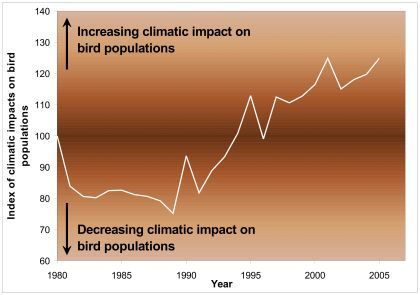
Climate change will also cause some of its most series but “least” predictable impacts by shifting the timing of natural events and by shifting species geographical distributions. This will rearrange animal and plant communities and ecosystems and disrupt bird’s relationships’ with predator’s competitors, prey and parasites. These changes are expected to alter the makeup and functioning of most if not “all”, the world’s ecosystems spelling a catastrophic change of events for species. Furthermore and based on scientific findings and conclusive research evidence clearly suggests that bird species will not be able to adapt. As explained above some local migratory birds may be able to adapt to the changes of climate change however new research is emerging that even this may not be possible.
The early warning signs of climate change can be seen in shifts in timing of important seasonal events for birds, such as eggs laying and migration. These shifts have been documented in North America, Europe, Australia, America and Africa. Some birds in Europe and Africa have even stopped migrating altogether with climate change becoming more rampant.
Human induced climate change could cause historically unprecedented rates of change with species forced to shift 10 (ten) times faster than during any climatic change seen at least since the last ice age. This will exceed the ability of many plants and animals to migrate or adapt thus leading to “extinction”.
International Animal Rescue Foundation Africa can now categorically state based on proven research, and conclusive climate modelling analysis that climate change will be the most destructive aggressors to our bird, mammal and aquatic species and “could” contribute sustainably to extinctions worldwide on a copies scale of birds, mammals and aquatic species. Birds and other mammals that “were considered safe” are no longer within a safe zone of which will all be affected in some way by increased temperature rising and habitat fragmentation.
Staying on the African track, will animals become under “increased” attack from local African communities that are fighting to stay alive? International Animal Rescue Foundation Europe believes so. The Europe (Raf) NGO stated;
“CO2 emissions responsible for increased climate change events have contributed to vast swathes of agricultural lands, river beds and cultures vanishing. With no land to farm in affected zones and little or any water readily available to distant cut off communities and farmers based on the current poaching trends of individual opportunistic poachers that poach to feed their families, we should under no circumstances believe poaching will decrease.”
“Evidence has proven from a variety of sources and our own within the Central African Republic, North Africa and West Africa that food is scarce and farming communities seriously depleted thus inducing starvation, crime and antisocial behaviour. Furthermore on questioning the locals all questioned had not received any form of aid or help from the United Nations or their own government to bulk up food mass, water and sanitation. This then poses the question of just how do these families actually survive” I think Johan, that we can categorically state that poaching to feed families and increased bush meat trade coupled with illegal logging and traditional medicine trade and demand within Asia will most certainly increase. Regardless of how governments and environmental agencies are now tackling demand and poaching within South Africa and Asia it’s not going to have any real profound effect on the “want” to stay alive” people here are desperate, what do we do Johan?.
The local communities have less than a $1-3 a week to live on and human population within the West, Central Africa and North Africa is vastly exploding, they need monetary funding, they need food they need water they are dying”. “Coupled with the increase in human population this is also having a profound effect onto South Africa a more “developed African country”. Human birth rates are increasing, agriculture, food availability and aid is decreasing, asylum seeking is increasing from the north to the south of which will also displace native mammal species thus seeing increased local extinctions of mammals and birds”.
“We led a 2 year mission into Africa back in 2001 of which bush meat poaching and “opportunistic” poaching was not as high as it was today based on chart surveillance and questioners”. “On questioning the many small communities within the CAR, Northern Africa and Western Africa families reported lack of rainfall, decrease in arable farming, and low income. I must also point out that now the local communities know they can gain a buck or two from Rhino horn and Elephant ivory then sadly we are not going to see any form of poaching decrease unless the African and Western Governments address their carbon emissions professionally and proactively sooner rather than later”. “At the moment Johan we are pleading with the international governments to help increase arable and cattle farming of which if we can see some form of agricultural help we can then monitor the local big game poaching pandemic and bush meat trade further hopefully with positive results seen”.
“We can no longer just address poaching and demand, we have to address and take on climate change, poverty, and agriculture too, and until this is addressed we will most likely by 2070 see some 15 species of megafauna wiped out with birds and small predators too”.
Johan that runs the African External Affairs Environmental Investigations Unit also stated another worrying aspect of how climate change “will” see many thousands of Africans suffer from starvation from lack of available fish and staple dietary foods that many Africans rely on. Of course if the worst comes to the worst then importations from other countries can be relied on. To feed though the majority of 1.033 billion (2011-2013) people will only increase CO2 emissions internationally furthermore as those countries providing Africa will not only have to fend for themselves but provide to Africa too. Continents around the globe are also under climate change disruption too!
Approximately 200 million Africans rely on fish as an important part of their diet. Ten million households directly derive income from fish production, processing or trade. Yet the enormous potential of fisheries to help feed and improve the nutritional status of the rapidly-increasing population of Africa is greatly under-realized, and precious aquatic resources are being degraded.
CO2-driven acidification and warming will gradually change ocean ecosystems over century-long timescales. These changes will likely have gained momentum by 2050 such that their impacts will be strongly felt for centuries. Biodiversity and habitat loss are already evident and will continue to degrade ocean ecosystems, while eutrophication and toxic plankton will continue to have localised, dramatic effects on ocean health. While ocean ecosystems are set to degrade, the inefficiencies of current fisheries practice means we get only a fraction of what we could get from the ocean. Humans only benefit from a small proportion of the ocean’s primary productivity - on land we eat herbivores, but we eat top-end predators from the marine environment. Poor and inconsistent regulation of the marine environment means we have also diminished ocean populations to the point where their inherent resilience and productivity is low. Population growth, especially the disproportionate growth of those who depend heavily on fisheries to underpin their livelihood (directly and indirectly), will make the issue of fisheries and fishery management more pressing over the next few decades.
What does the future hold for 2050 and marine aquatic fish stock?
The overwhelming evidence from all contemporary climate change models suggests ocean temperatures will increase almost everywhere over the next century – though some areas will warm more than others. The Arctic may become ice-free and the Antarctic Ice Shelf reduced. The tropics could experience regular (annual?) spikes in sea temperatures, leading to bleaching of coral reefs, with temperatures hostile to many of the existing biological communities. Warming will bring about reorganisation of existing communities, with migration of species away from the tropics, and only if suitable habitat is available elsewhere. The timing of important life-history events (phenology, e.g. spawning, egg maturation, migrations) will change, often leading to match-mismatch between trophic levels (e.g. zooplankton and larval fish) with consequences on whole ecosystems and bioresources (e.g. fisheries). Sea level is unlikely to change dramatically in the next 50 years, but shallow water nursery/feeding areas may change, as may chemical signals emanating from shallow water environments. Concluding big aquatic Africa predators will most likely be affected from depleted fish stocks thus seeing species forced to displace or regrettably perish from hunger and malnutrition. Extinction within the next 50-80 years will evidentially occur of many African and non-native African aquatic species.
Concluding:
Climate change is not going away. And, Africa will bear the brunt of it.
Africa consumes a tiny fraction of the world’s fossil fuels, yet it is predicted to shoulder far more than its share of the negative impacts of climate change. Between its size, vast natural resources, and unique weather patterns, the continent is especially susceptible to the effects of rising temperatures. Without comprehensive measures to understand and address the impacts of climate change, the well-being of both Africa’s wildlife and its people are in jeopardy. Climate change disbelievers can either shut up or buck up as climate change in Africa is here and Africa still a developing country will be affected the most.
Climate change is not a natural phenomenon. It is caused by mankind.
Climate change impacts our planet’s weather patterns, affecting everything from the global economy to food security to our physical safety. What’s more, greenhouse gases are hazardous to our health. Humanity created this phenomenon, and it’s up to us to address its effects and prevent further damage. Africa is home to just 17% of the world’s forests, yet deforestation on the continent is estimated to be four times the global average—and the pace is accelerating. Practices like rapid deforestation combined with excessive greenhouse gas emissions from around the world are all contributing to climate change. Rising temperatures are having a catastrophic impact on the people of Africa, resulting in unreliable farming seasons, low water supplies, increased droughts, severe heat waves, heavy storms, and flooding.
Part of the challenge in addressing climate change is that it can be a difficult concept to understand. Even once people understand the threats climate change poses, it is hard to get individuals, businesses, countries, and communities to change their behavior and adopt new habits, such as using eco-friendly cook stoves that require less wood than traditional cooking methods.
Solutions that can be adopted are;
Counteract greenhouse gas emissions by arranging carbon payments.
Provide training on sustainable land use and agriculture techniques.
Promote sustainable energy technology.
International Animal Rescue Foundation will release more data on this subject in the next few months based on their climatology reports and questionnaires - please take a minute of your time to fill in our survey below.
Thank you for reading and for taking time to fill out our poll.
Dr Jose Depre BEM, PhD, Ma EnVstu
Donate today by clicking this link to Fund African Wildlife Survival (F.A.W.S) below and help us to sustain our Africa pristine and natural wildlife heritage. For further information please contact the International Animal Rescue foundation here
Kerala-Nagaland-Dog meat .. Welcome to India
Kerala - which leads the country in several indicators including literacy - is also the highest consumer of meat with a daily requirement of over 5,000 tonnes, according to the state animal husbandry department. Animal husbandry director R. Vijayakumar does not find the figure of 5,034.96 tonnes a day surprising as 80 per cent of the state’s residents are non-vegetarians. “The sad part is that the domestic production of meat (beef, mutton and chicken) is just around 264.31 tonnes,” Vijaykumar said, adding: “The rest comes from nearby states.” The department has collected this data for a national meeting in Gujarat later this month to review the production of meat and allied products. The survey finds chicken to be the most preferred. In fact, from a mere six per cent share in 1990, it now accounts for 45 per cent of the meat consumed in Kerala. “The eating profile of our people has undergone a huge change,”.
Concerning is the trade of dog and cat meat ongoing in both Nagaland and Kerala of which many “governmental ministers” are trying to whitewash or keep quiet. No longer will the trade be kept quiet. Today International Animal Rescue Foundation India visited the state of Assam of which investigating on local reports located not just dog and cat meat vendors but stories from the locals that state a “sex trade” is ongoing within Assam, Kerala and Nagaland of both dogs and cats to our utter disgust. We cannot print the locations of our findings online due to the graphic content however ask our viewers, supporters and subscribers to please research “Kerala dog sex trade” of which you will be sickened by what we found on the ground. Dog meat, cat meat and animal sex is something that we would least expect to locate within India.
The authorities in Assam have increased vigil along National Highway 39, which connects the state with Nagaland, to check smuggling of dogs to the neighbouring state where dog meat is considered a delicacy. “It’s election time and there is big demand for dog meat in Nagaland where feasts are held in villages and in which the meat is looked forward to. As such we have increased vigil along the highway to check smuggling of dogs from Assam to the neighbouring state,” said Arup Ballab Goswami, honorary wildlife warden of Golaghat district.
Election in Nagaland is considered a time for feasts and merry-making and sources said village councils play a significant role in deciding the fate of candidates. “More often than not, these councils decide who the villagers should vote for. It’s a collective decision and once taken it is expected to be adhered to by the villagers. The entire exercise also involves a lot of community feasting as candidates do their bit to woo votes,” a source said.
There are also reports of a large quantity of liquor being smuggled to Nagaland from Assam, as the neighbouring state is officially dry.
Sale of dogs in Nagaland is brisk business but the supply remains insufficient. Thus, dogs from Assam are illegally sent to Nagaland. Buyers from Nagaland arrive at villages in Assam and buy dogs at prices between Rs 200 and Rs 500 each, depending on the health and build. Sources said a single dog could fetch a price as high as Rs 2,000, especially during festivals.
Till a few years back, it was a common sight to see rows of dogs, tucked in gunny bags, kept on the side of the highway near Dimapur along the Assam-Nagaland border checkgate as owners awaited vehicles to load the consignment for onward journey. Goswami said there has been a drop in smuggling of dogs in recent times following steps taken by Assam police after wildlife activists raised a hue and cry. “But dogs still get smuggled to the neighbouring state and this increases during festivities,” he added.
Goswami said smuggling of dogs, a big racket, was punishable under Section 11 of the Prevention of Cruelty to Animals Act, 1960.
Nagas are voracious meat-eaters and dog meat is just one of the delicacies. The daily market at Kohima throws up a wide array of meats, from the ubiquitous chicken, pork, beef, squirrel to frogs and what have you.
Nagaland will go to the polls on April 9 to elect its single representative to the Lok Sabha. On election dogs and cats will be mercifully slain and eaten in “celebration” of the newly elected winner.
Stay tuned for more updates on this story.
Ebola Leaves Meat Market Women Furious
Ebola Leaves Meat Market Women Furious
The deadly Ebola Epidemic is reported to have entered the Liberian territory , which is dog meat central, after killing more than eighty persons in neighbouring Guinea. Market women selling bushmeat are furious because the Liberian government issued a statement for people to lay off eating dried bush meat for a while.
The women are angry because the government’s announcements is costing them customers and they want the government to shut up. Ebola can be transmitted to humans from eating infected bushmeat, which act as carrier of the deadly virus.
To date, health warnings have focused on dry bushmeat, however, infected dog meat is a very serious health situation that is not to be taken lightly.
After selling meat for fifteen years, Liberian lady Ma Hawa, bush meat dealer at Monrovia’s Waterside Market, told FPA that even during the deadly civil war when food was scarce, Liberians were not exterminated adding that Ebola will not wipe out the entire country.
“They said the sickness came from Guinea and people in Guinea do not eat dry meat so they just trying to spoil our business,” said Ma Tenneh Kamara,
“During the war, they were eating human beings, that one na [not] make them sick, that now they say that meat making people sick. They are spoiling our business and it is our living. The people who are eating dog meat, what they will say about them? They are just complaining about dry meat, people eating itchy dog, it is not killing them. They know how far the sickness coming from before they [are] lying on [about] meat.“
Ma Yassah, another woman dealing in the favorite food aid that the Ebola epidemic is taking away a vital part of the Liberian way of life-its food because without bush meat some dishes are not worth cooking or eating.
Liberia’s Health Minister Dr. Walter Gwenigale on Monday issued a warning to Liberians to desist from eating bush meat for now and went on to say that eating of bush meat or having sex during the epidemic would be a bad idea, something that was also buttressed by the World Health Organization (WHO) Country Director, Dr. Nestor Ndayimirije.
“I want to mention one point which is critical. The public needs to know that even if they [the hunter] say that they have killed that animal, it may be sick. It may be in the incubation period,” said Dr. Gwenigale (end of article.)
The dog meat trade in Liberia uses many dogs sold to traders from dog snatchers. If a stray dog eats an infected bushmeat animal, the dog becomes infected with Ebola as well. If a dog trader then catches the infected stray dog and unknowingly sells it to a dog trader for human consumption, an Ebola infected dog becomes a method of spreading Ebola and causing human deaths.
Michele Brown

